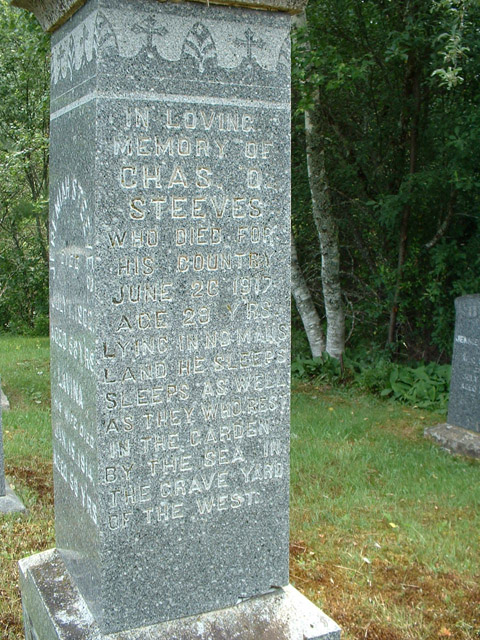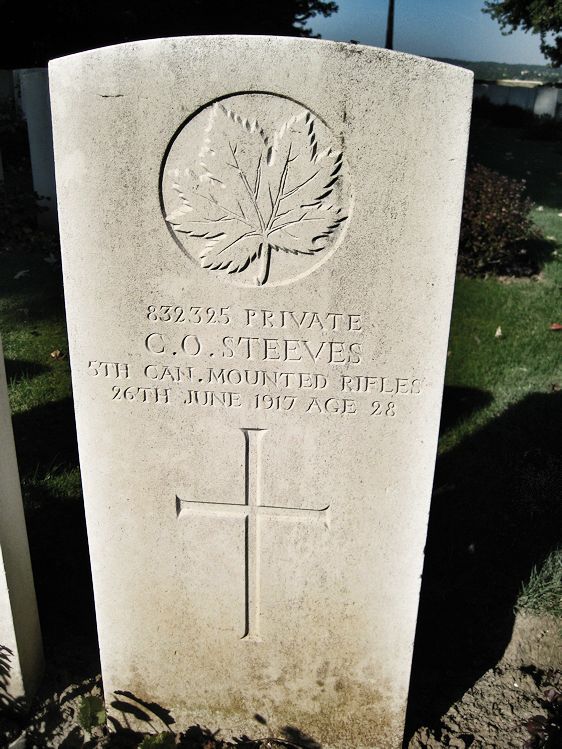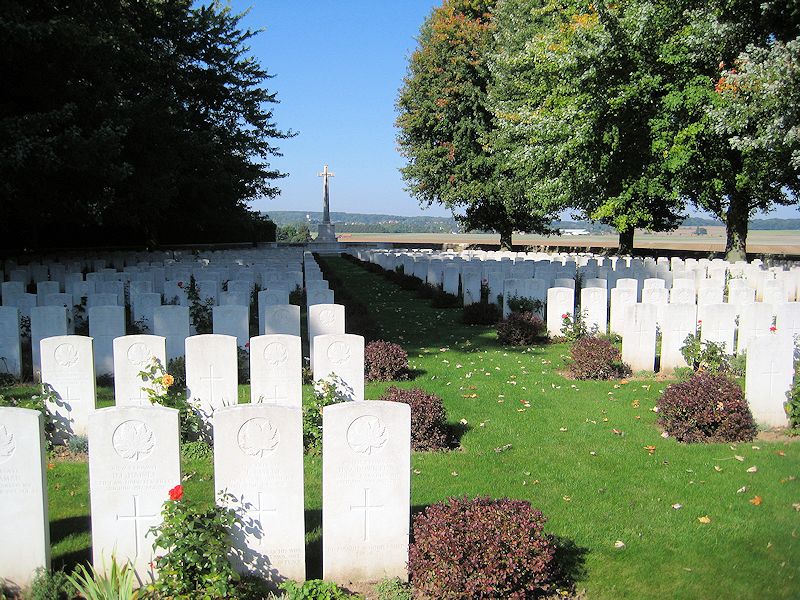2019 Heritage Week
Foods of the Fundy Vally Bee Keeping Workshop
Bee Keeping Workshop 2018
Introduction to Bee Keeping Workshop
June 2nd
9am-4pm
Albert County Museum, Community Hall
*Lunch will be provided*
Beekeeping is a fun and interesting hobby that allows you to produce the delicious treat of honey while helping the environment. Learn the basic principles necessary to begin this fascinating hobby. Topics include: overview of the honey bee colony; beekeeping tools and equipment; how to start with honey bees; swarming; honeyflow and harvesting of hive products; diseases, pests and enemies; hive and queen management; and beekeeping throughout the year. No prior knowledge of honeybees or beekeeping is required.
Instructor Bio:
Karen Thurlow started beekeeping in 1978 and is a certified Master Beekeeper. She is the owner of New Moon Apiary and manages 60 hives of her own in Cumberland County, Maine. Karen teaches bee disease and microscopy classes to other beekeepers. She sells package bees, nucleus hives, and raises and sells queen bees during the beekeeping season. She also sells raw honey, spiced creamed honey, and products she makes from her hives such as lotions, salves, and lip balms. Karen managed a bee equipment supply store for 7 years helping many beginner beekeepers get set up with the equipment they needed to start their beekeeping hobby. You can find her on Facebook or visit her website.
You can register by following this link. http://foodsofthefundyvalley.ca/bee-keeping-workshop-2018
The cost of the workshop is $40 for members of Foods of the Fundy Valley or $45 for non-members.
Shepody Bay
It is a beautiful day at the Albert County Museum. Perfect temperature for a visit and walk through the many displays ready for viewing. Including the newest exhibit: "County of Heroes - Cy Peck - VC and the Victory Cannons" that opened this weekend.
This morning, as I arrived to open the museum, I was taken by the beauty of the Shepody Bay. The sun shining like silver coins tossed on the water.
Lest We Forget - Albert County's Honour Roll Updated - Pte. Charles Osman Steeves Killed in Action June 26, 1917
We have found another Albert County man who paid the supreme sacrifice during the First World War.
Charles Osman Steeves, 832325 was from Hillsborough, Albert County, New Brunswick and was born November 10, 1888. He was the Son of Jerimiah and Lavinia Steeves. He enlisted with the 145 Battalion on February 14, 1916. He was listed as Killed in Action at while fighting with the 5th Canadian Mounted Rifles (Quebec Regiment) on October 30/31, 1917. He has is buried at LA CHAUDIERE MILITARY CEMETERY ; Pas de Calais, France
You can find his complete war records by clicking here.
He is Commemorated on Page 332 of the First World War Book of Remembrance.
A virtual memorial can be found here.
His gravesite information can be found here.
If anyone has any further information, photos or memories they would like to share please pass them along.
Thank you to Steeves House Museum for the photo.
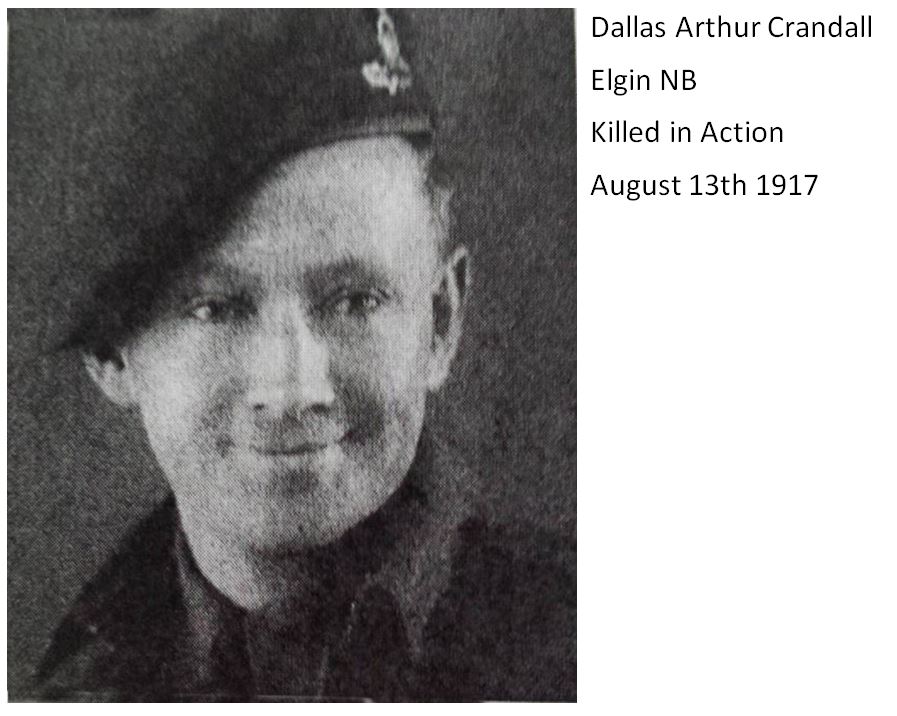

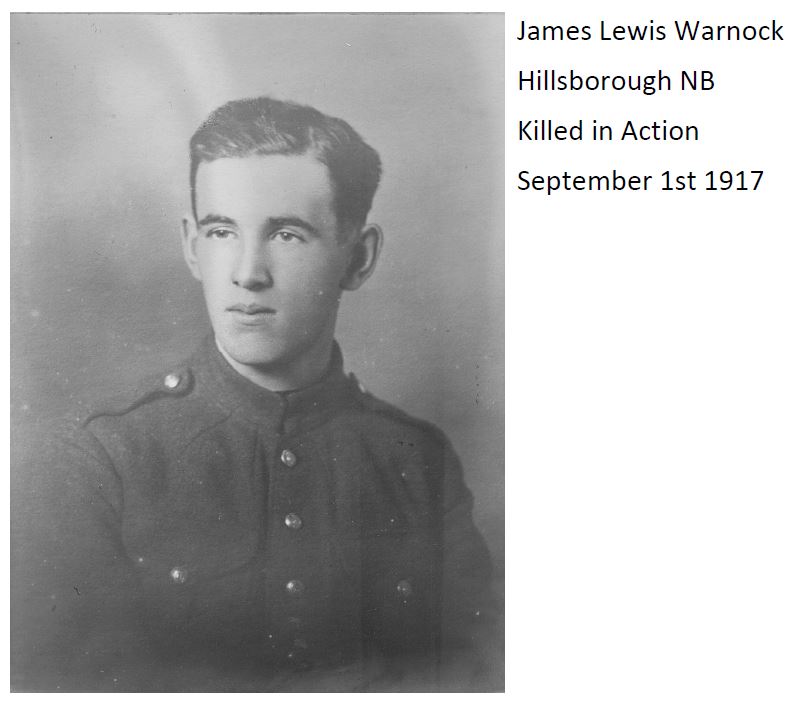
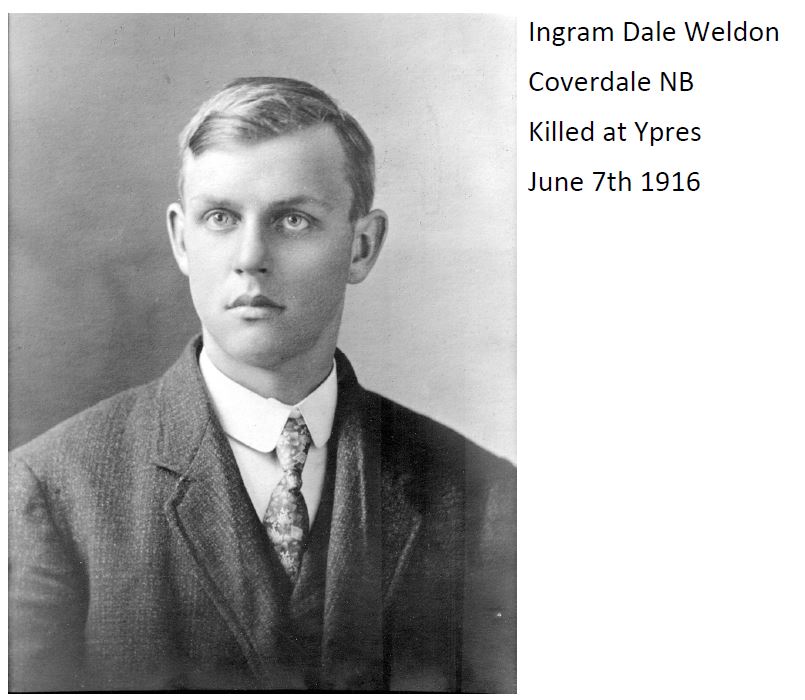
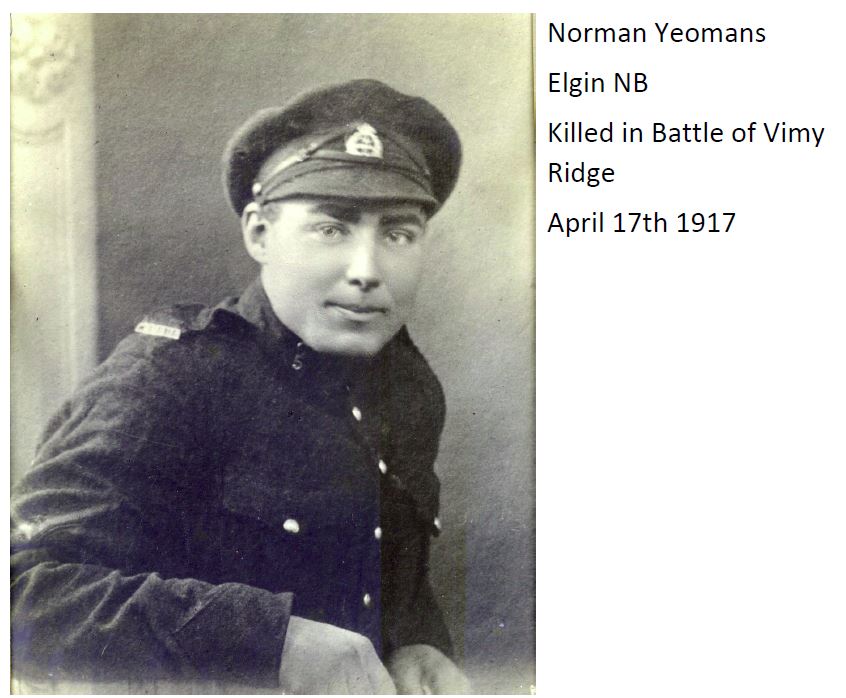
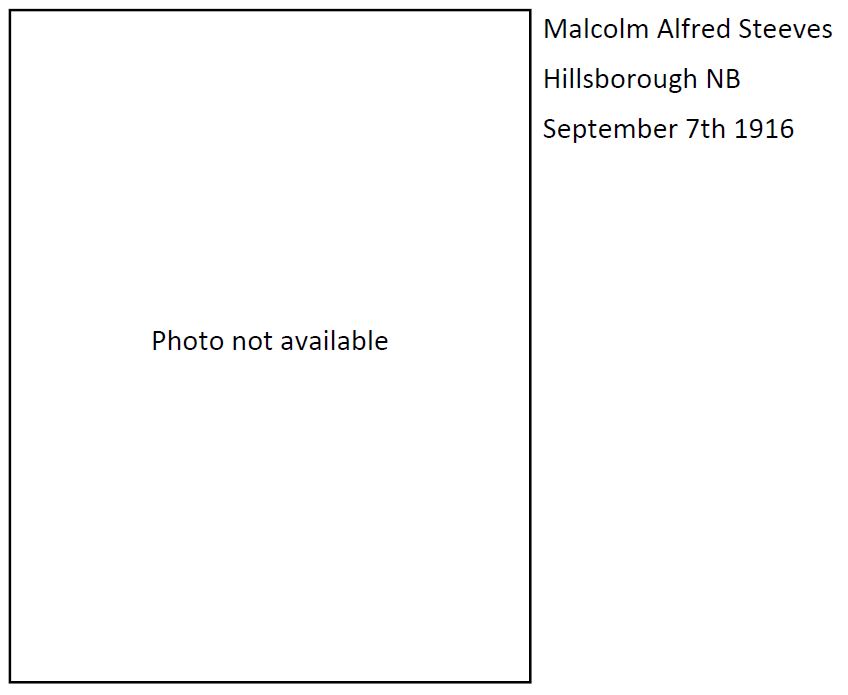
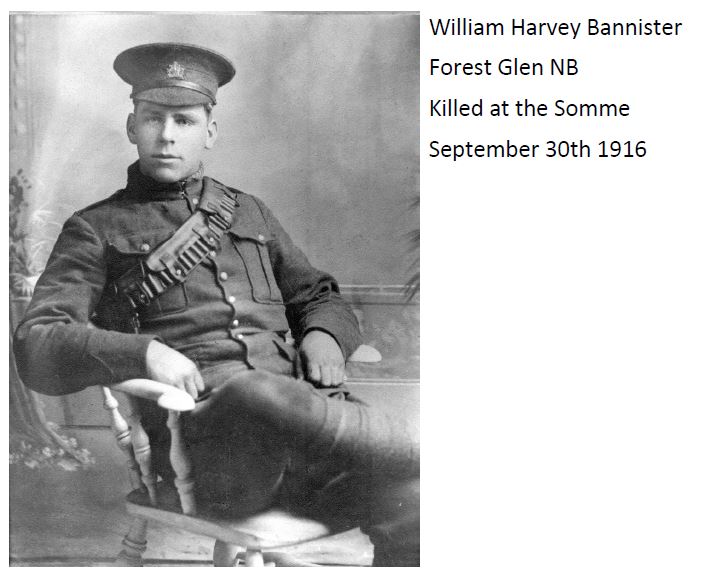
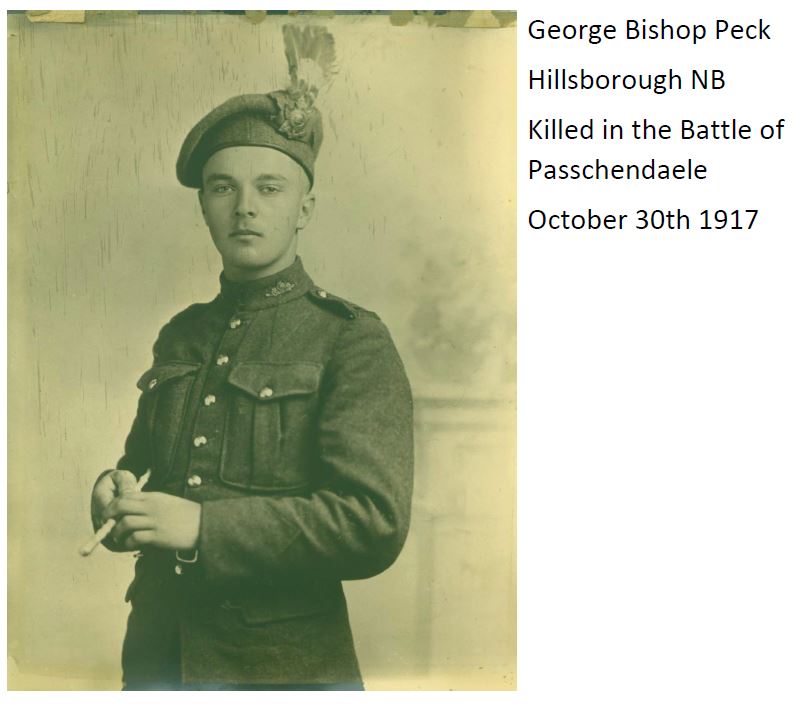
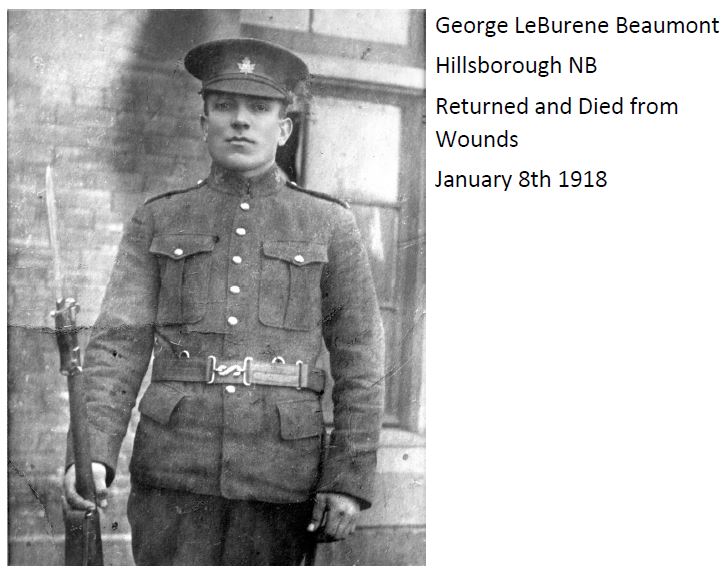
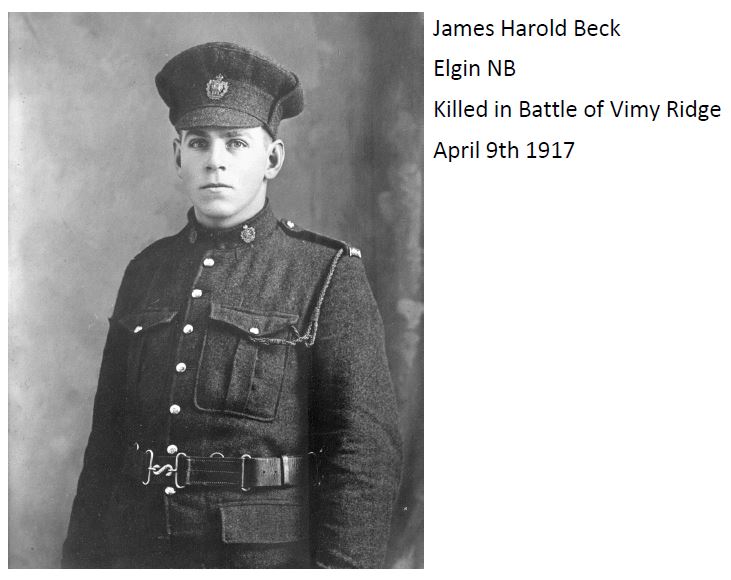
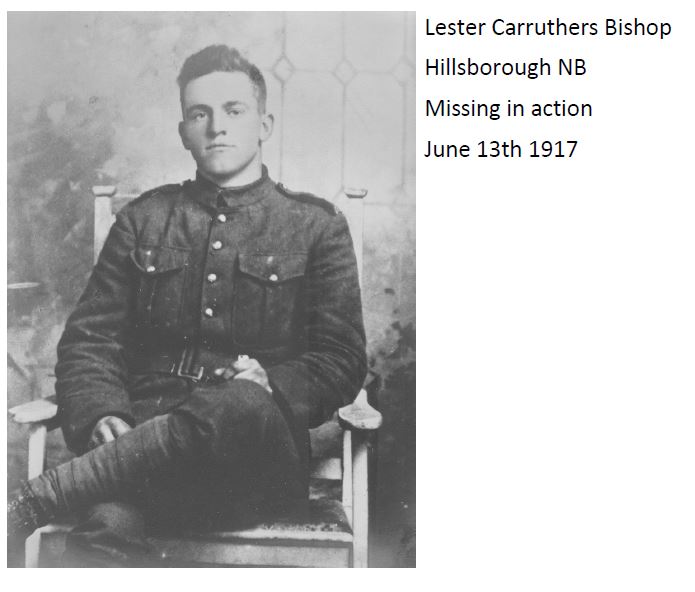
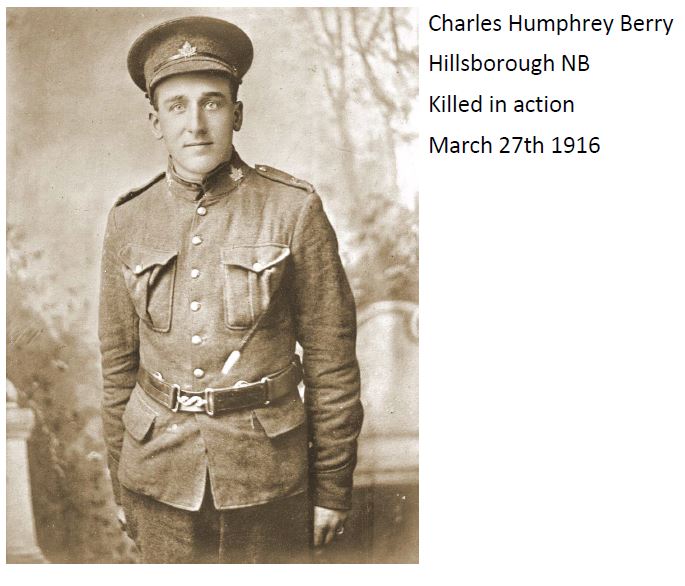
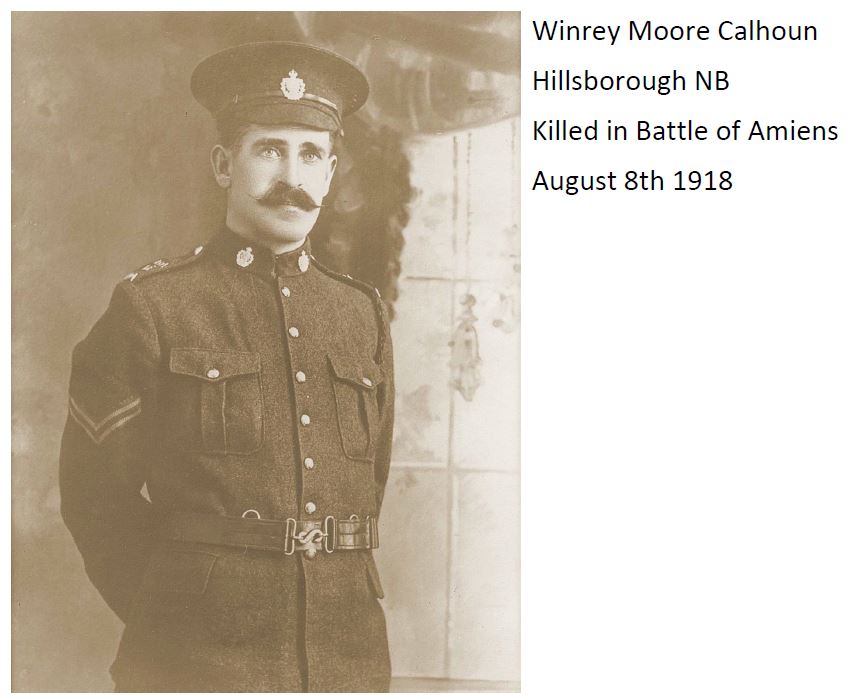

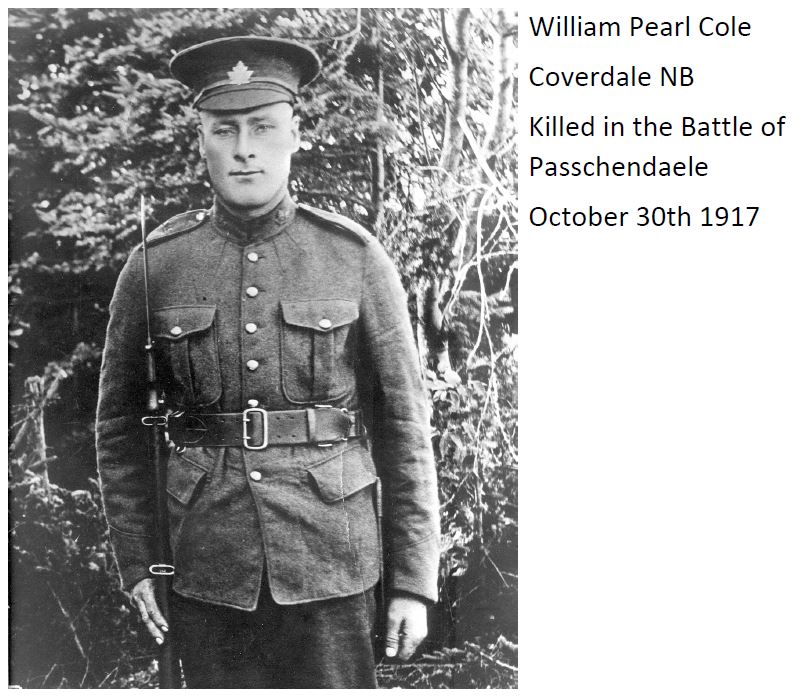
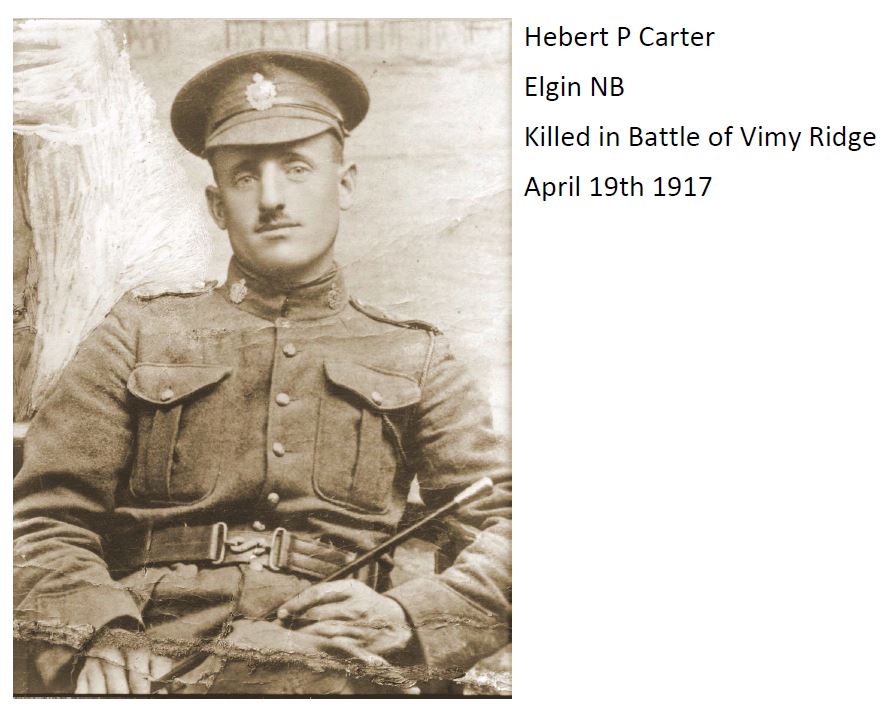
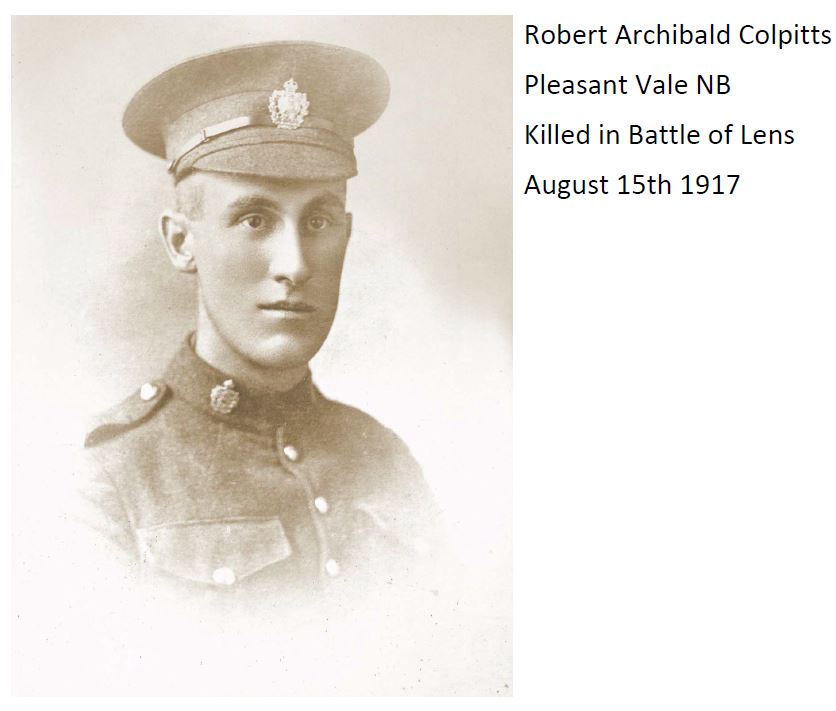
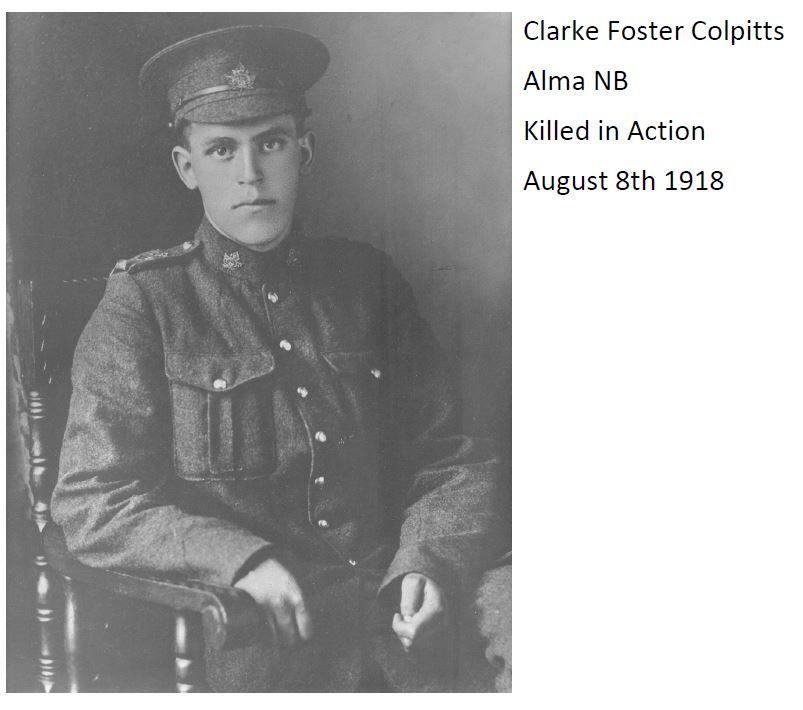

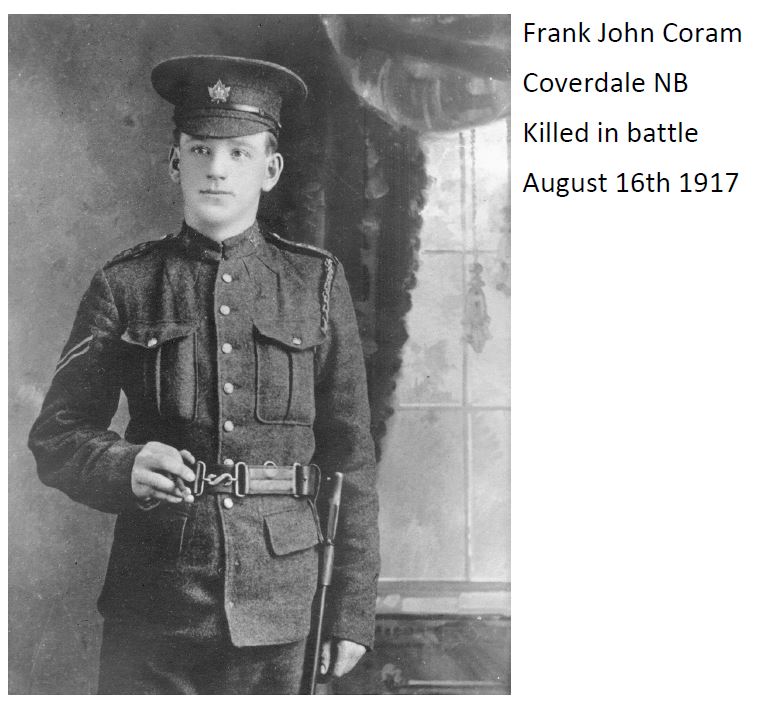


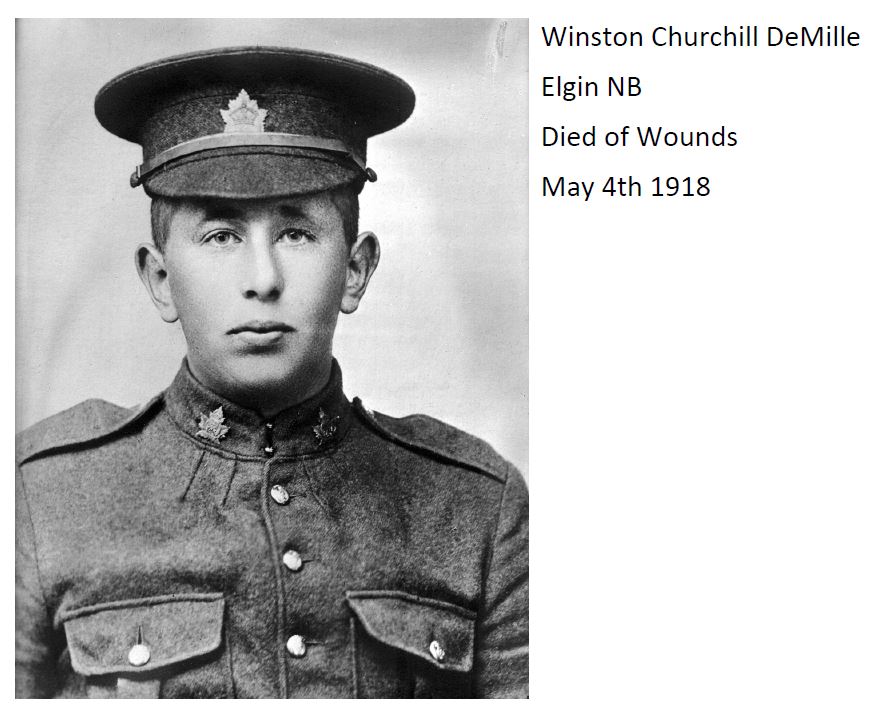
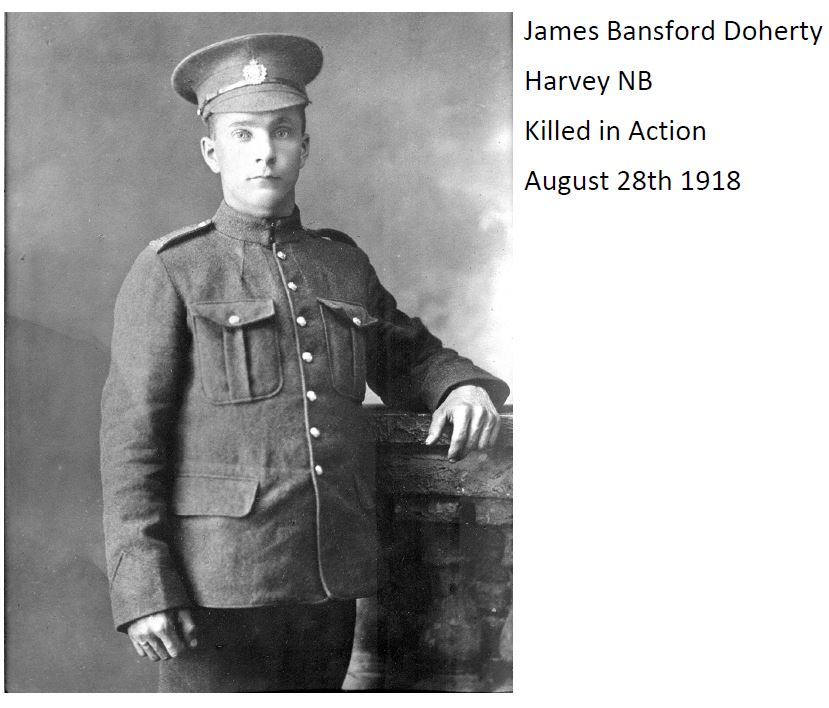
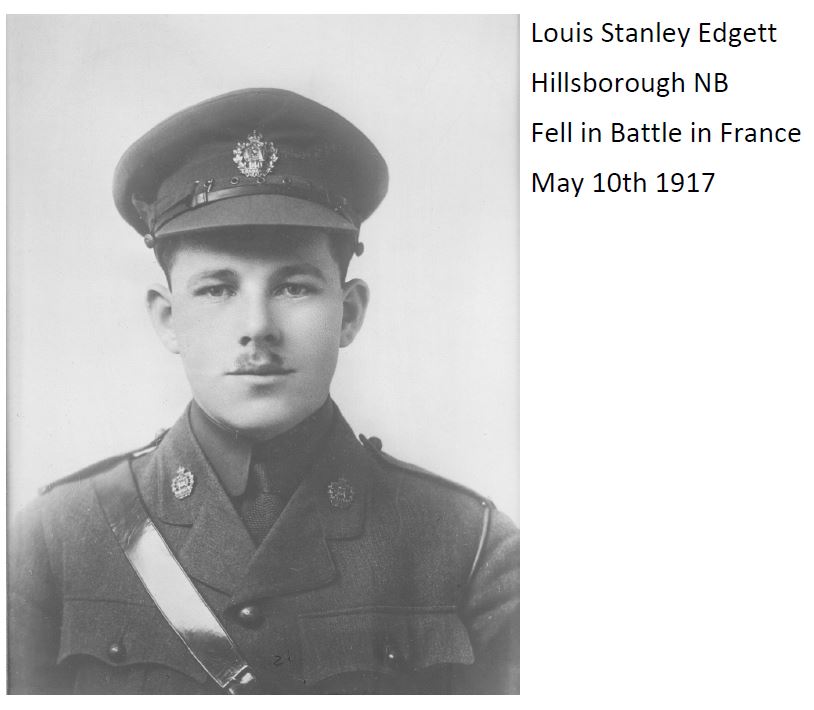

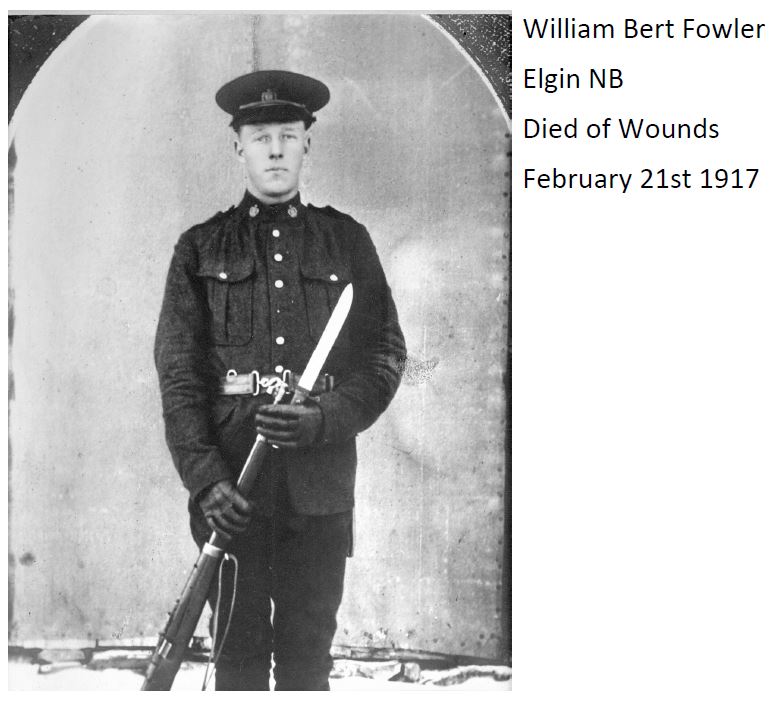
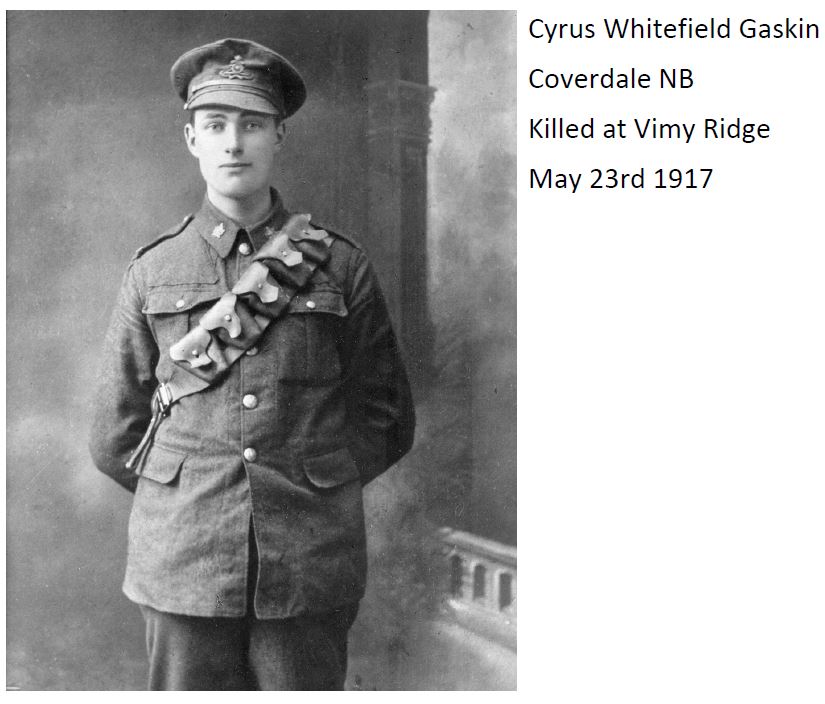
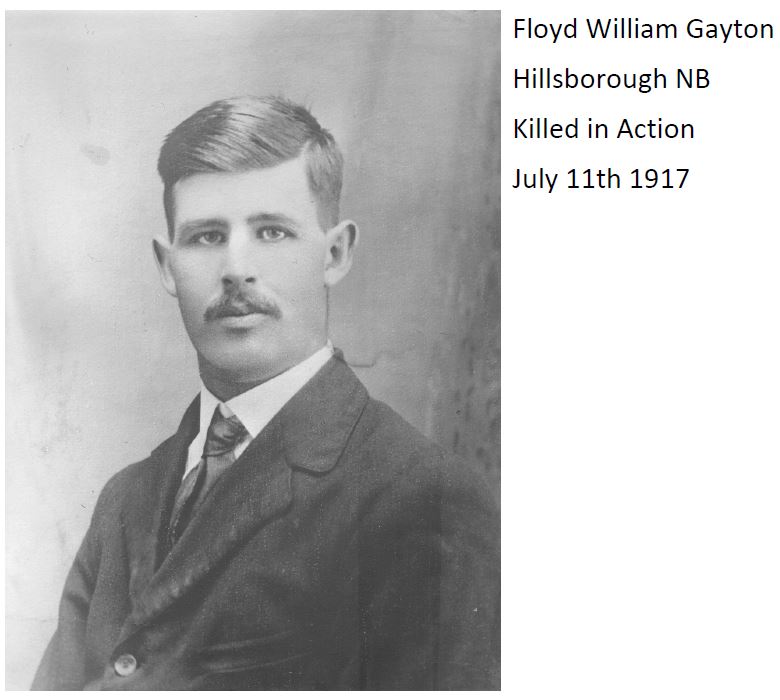
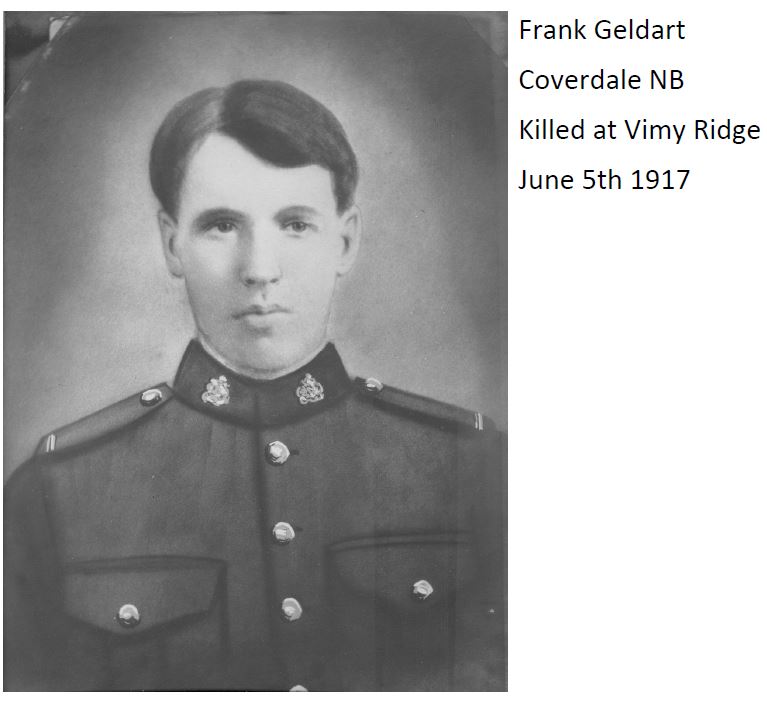
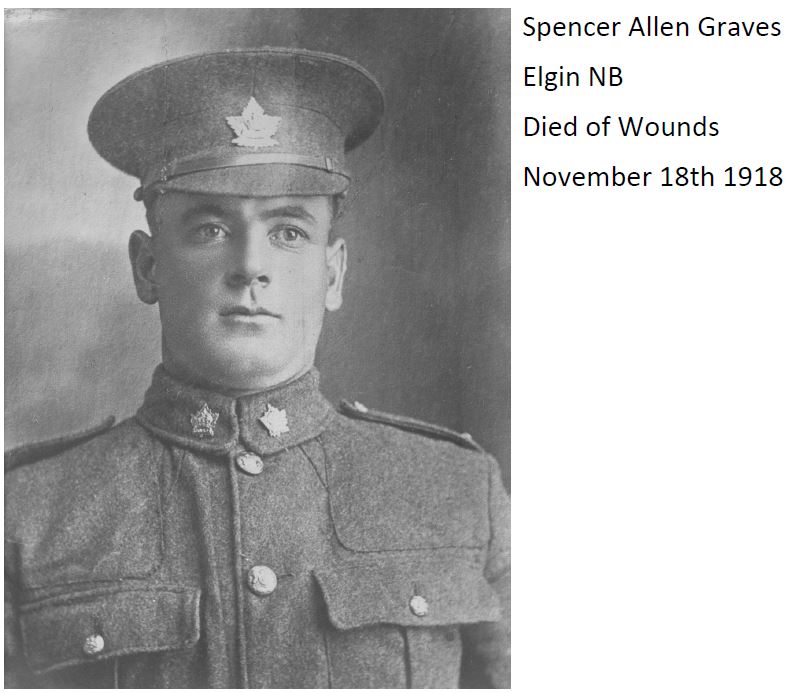
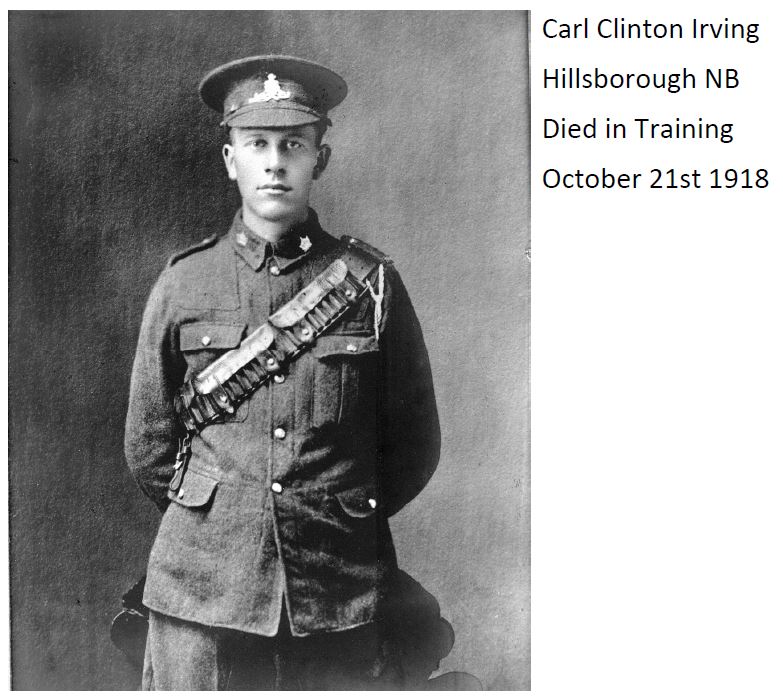
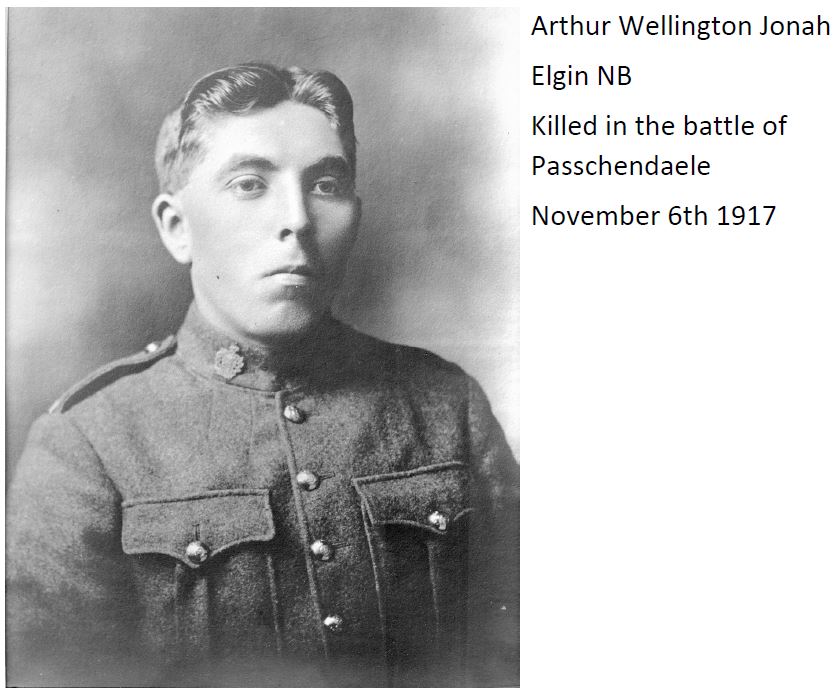
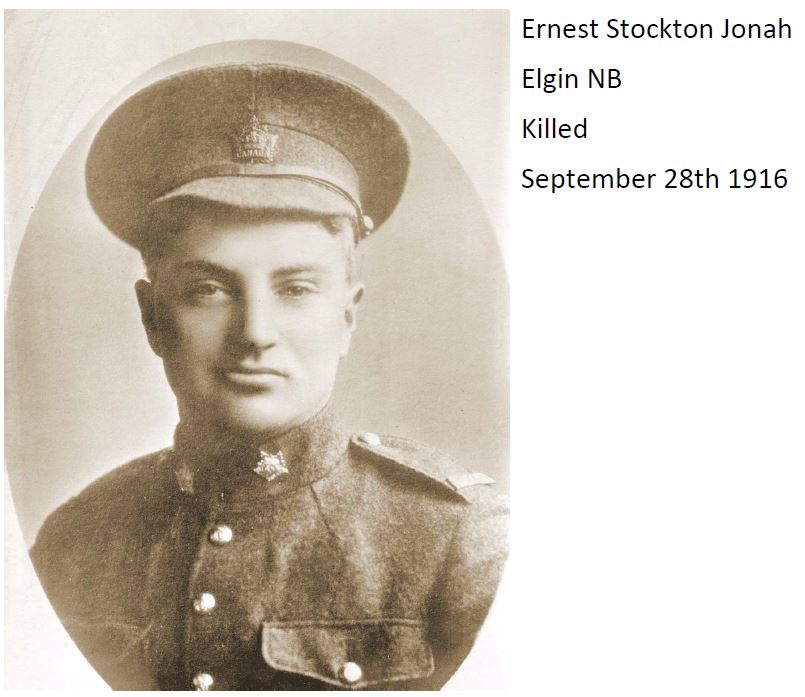
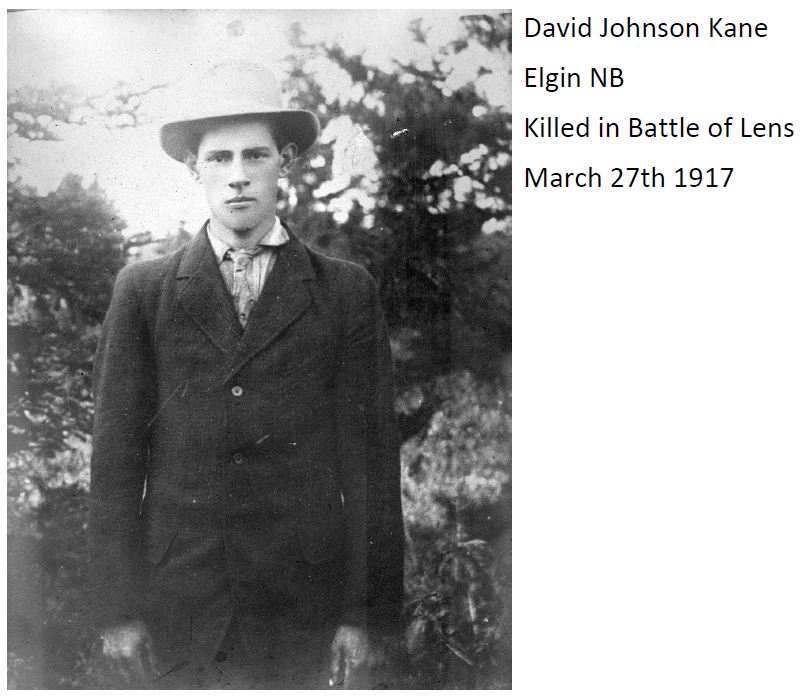
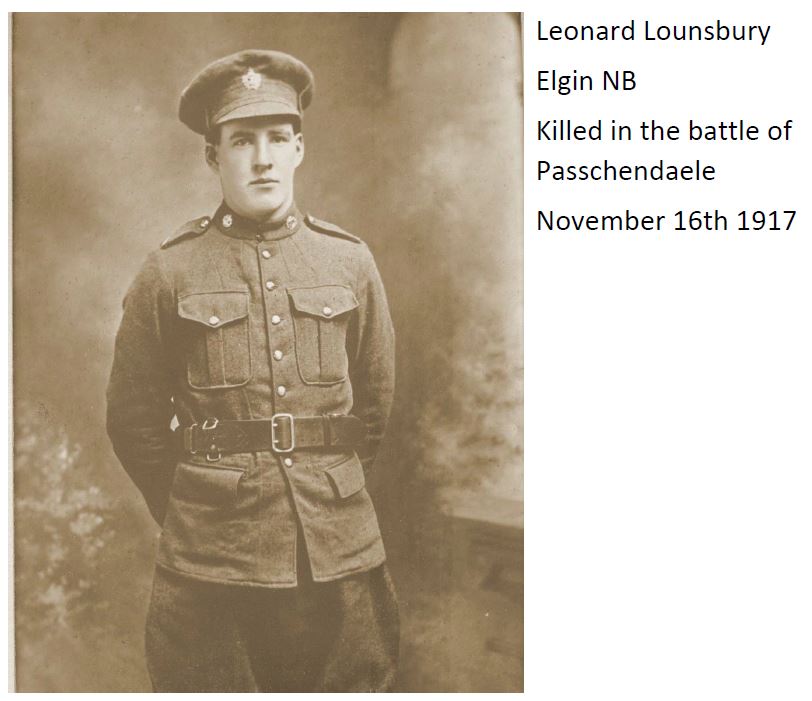
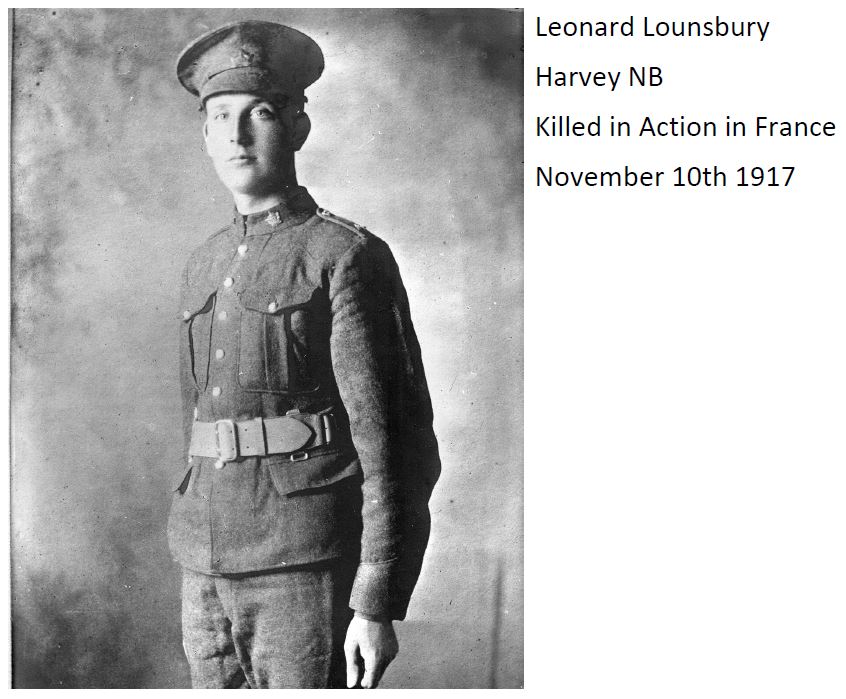
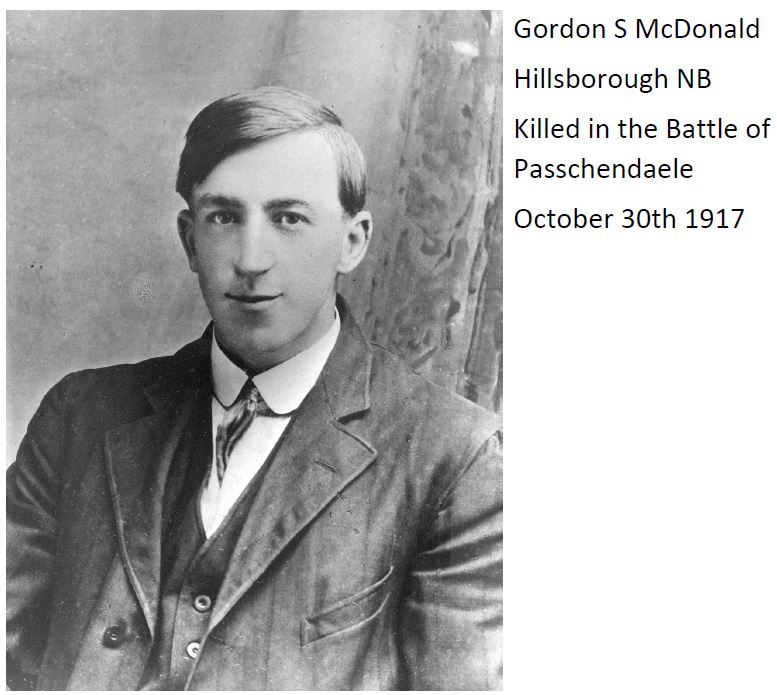
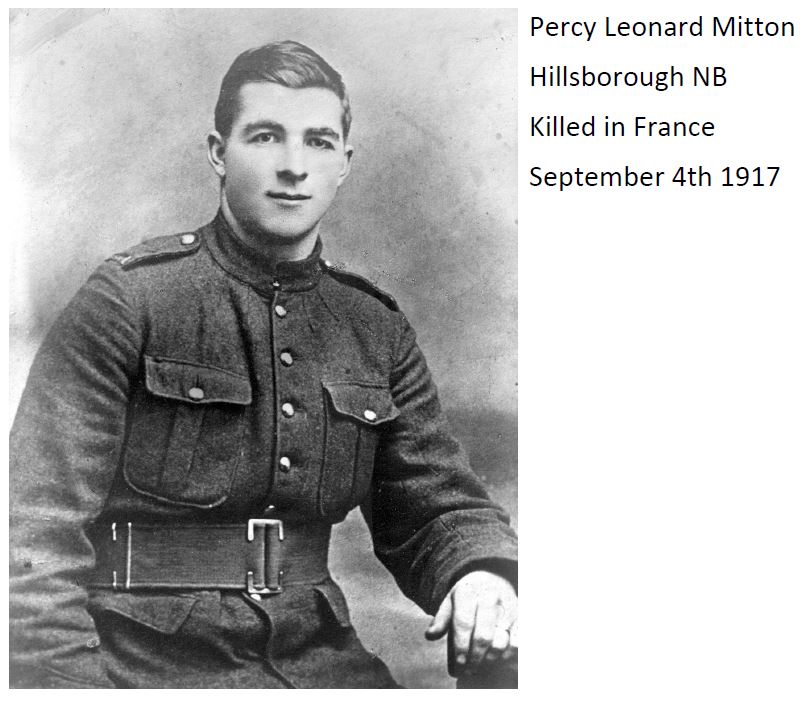

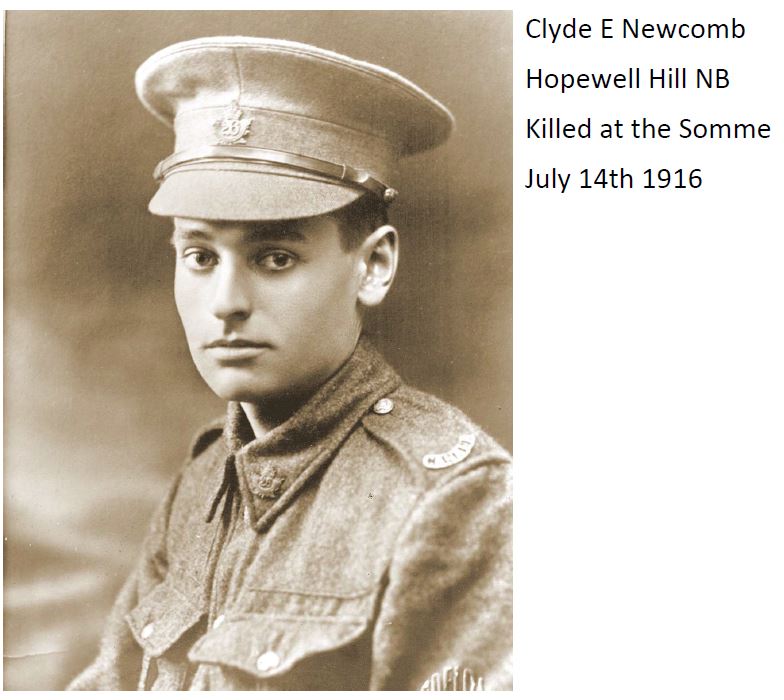
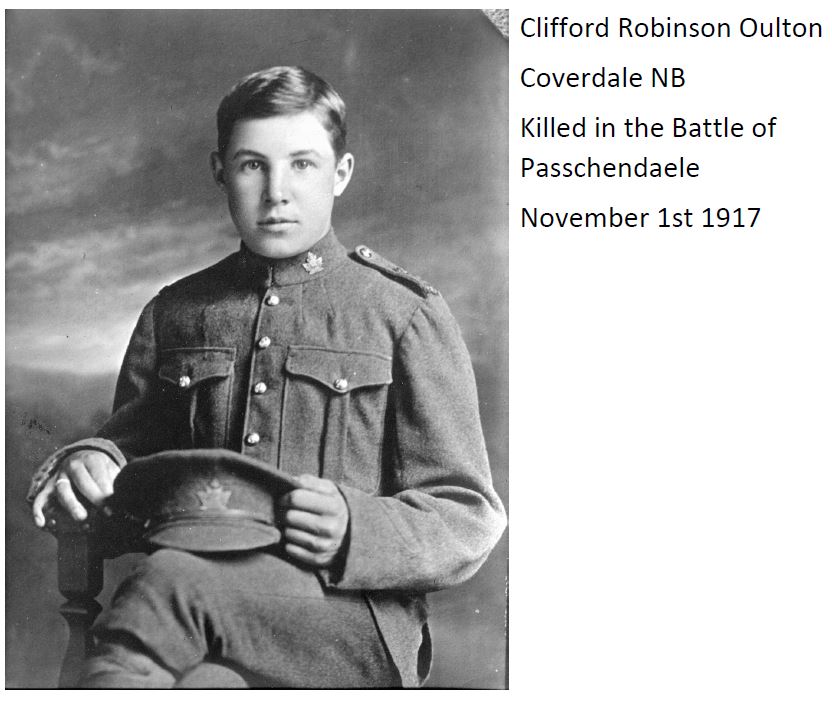
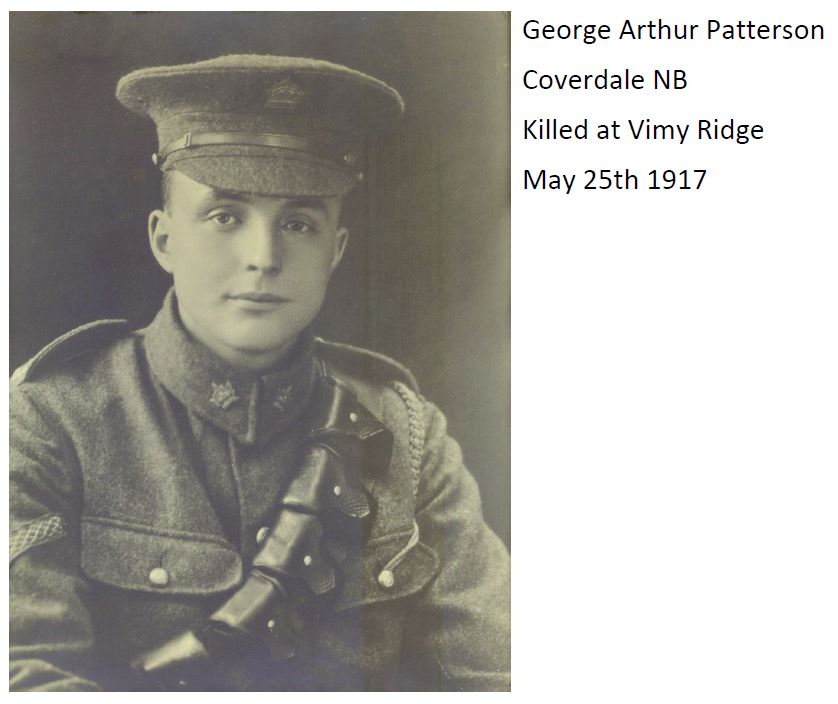

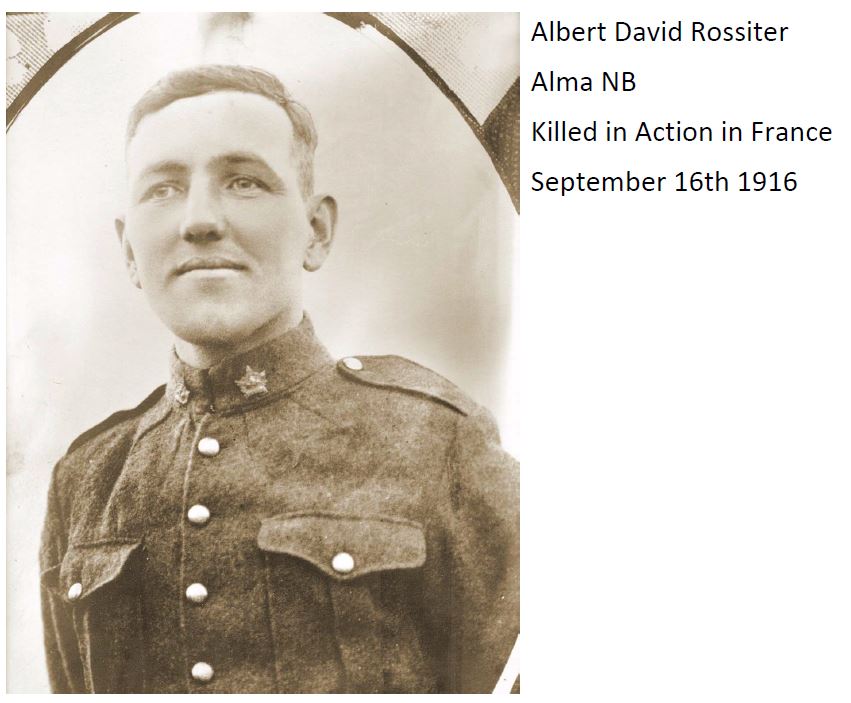
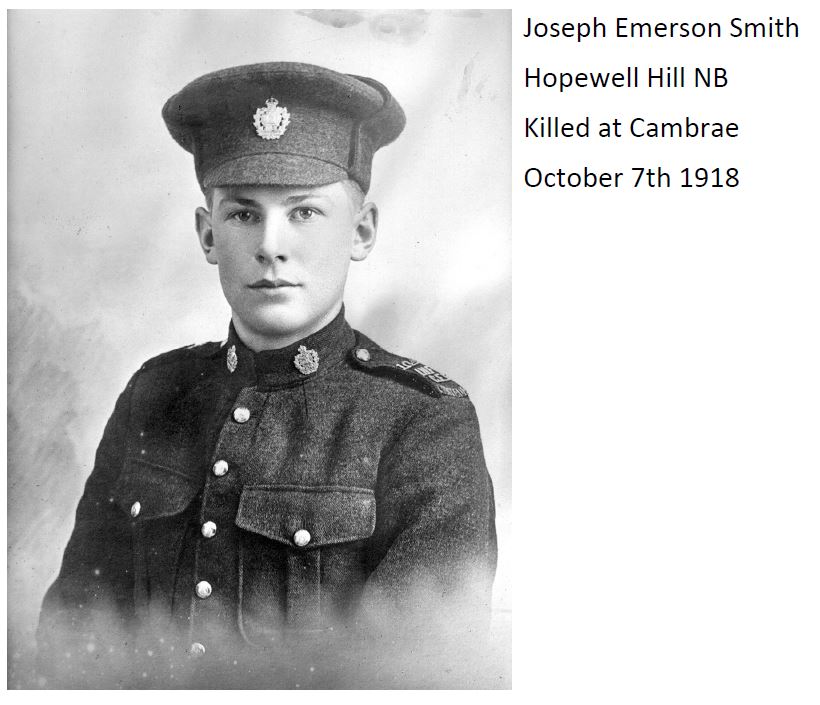
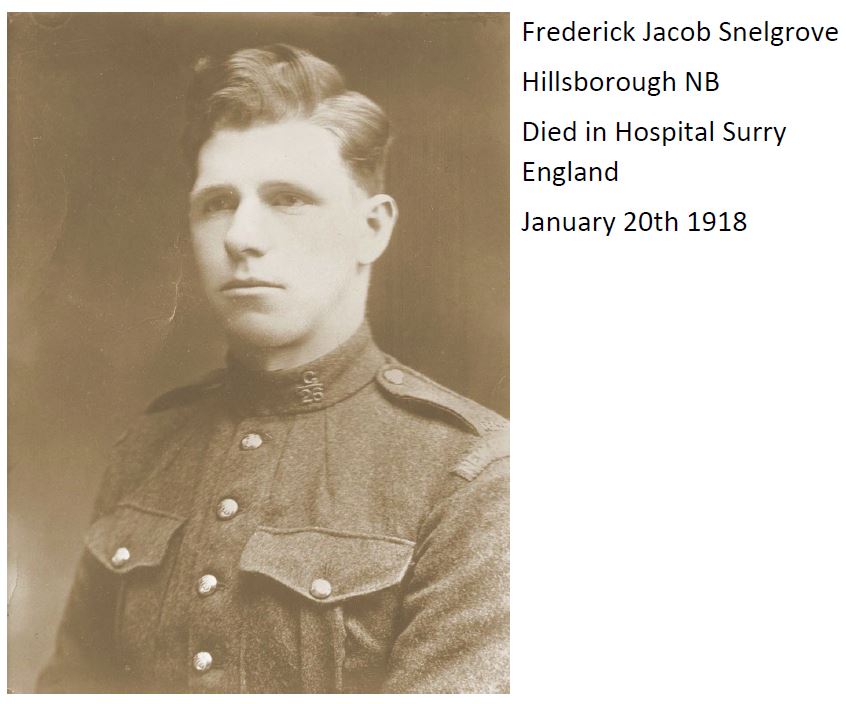
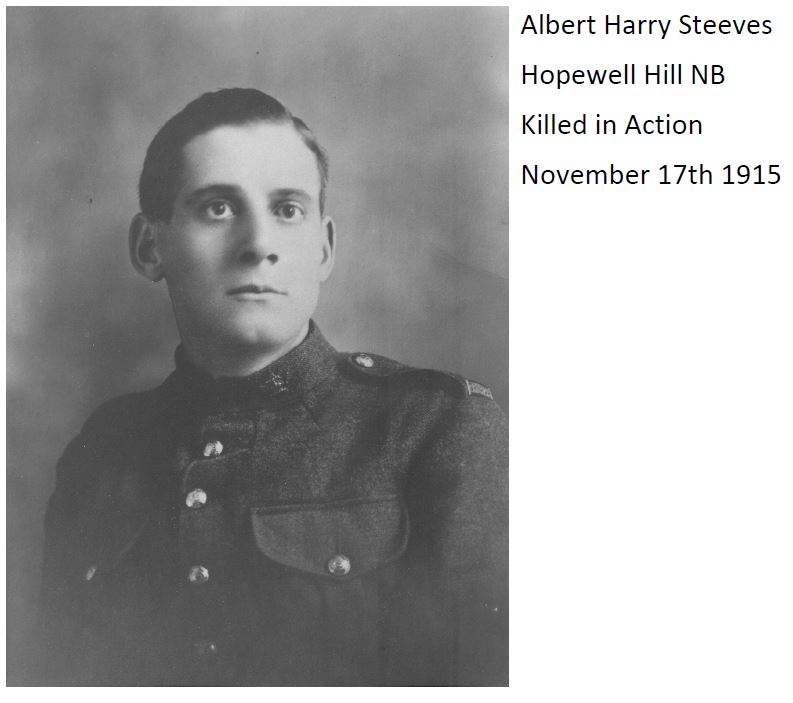
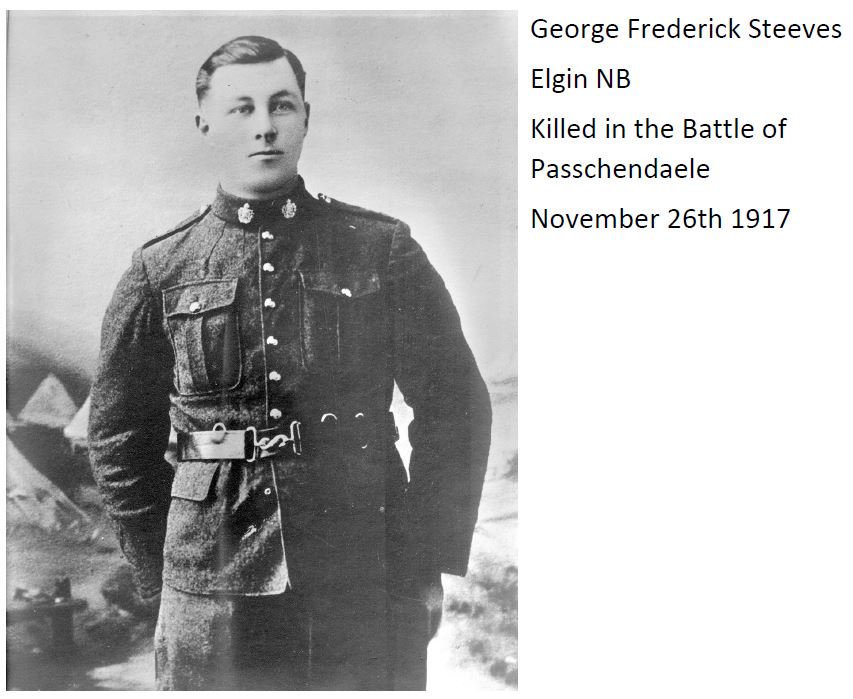

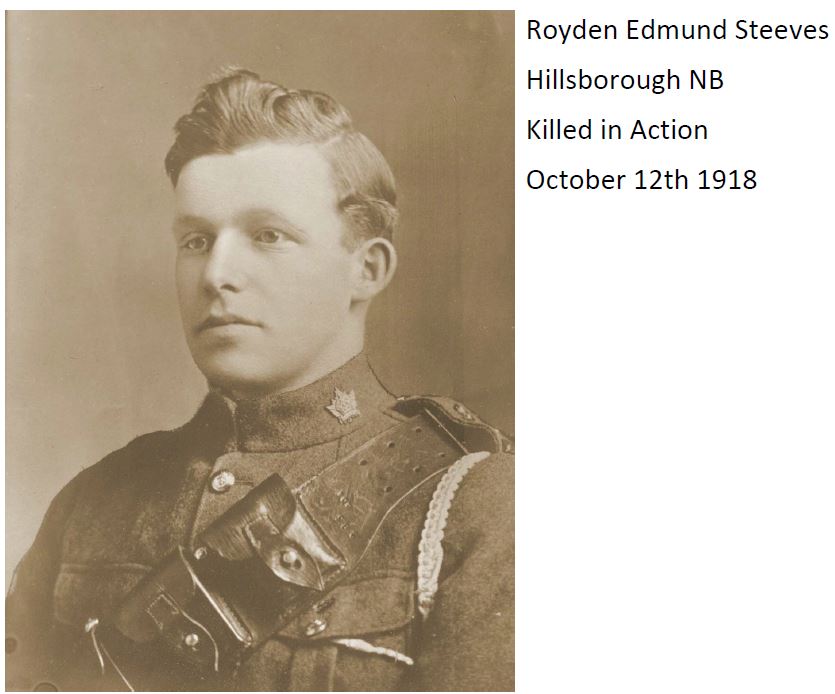
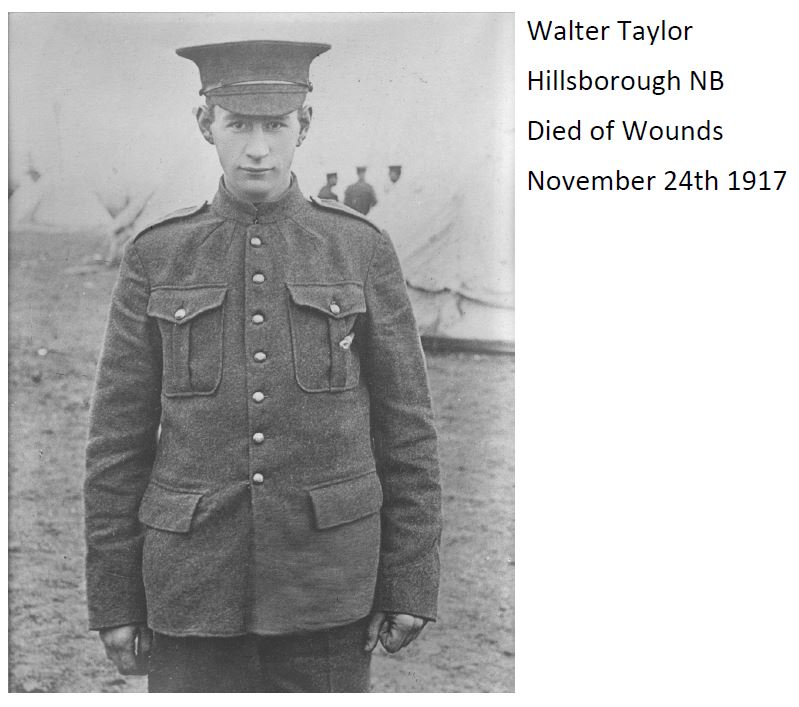
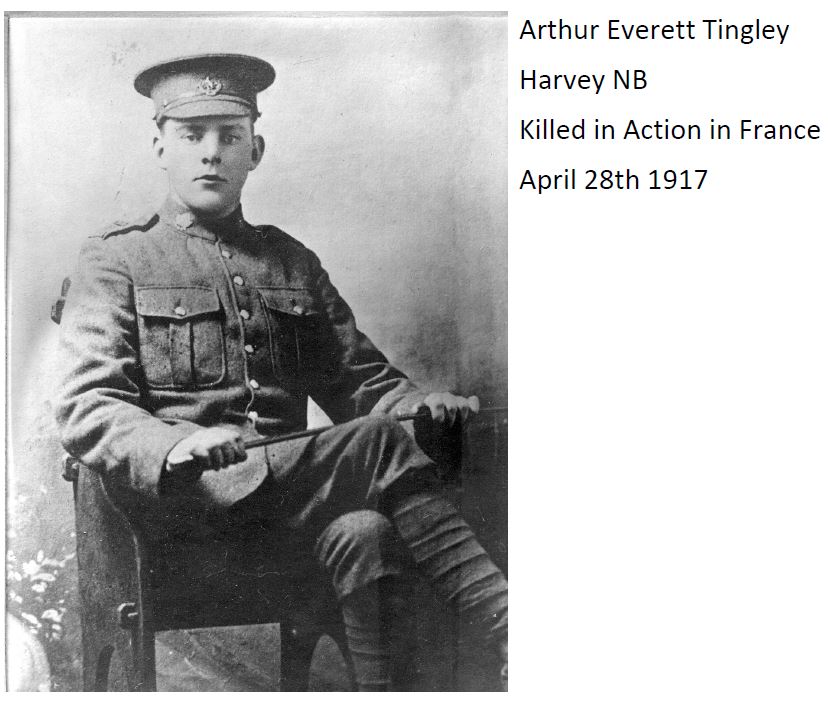
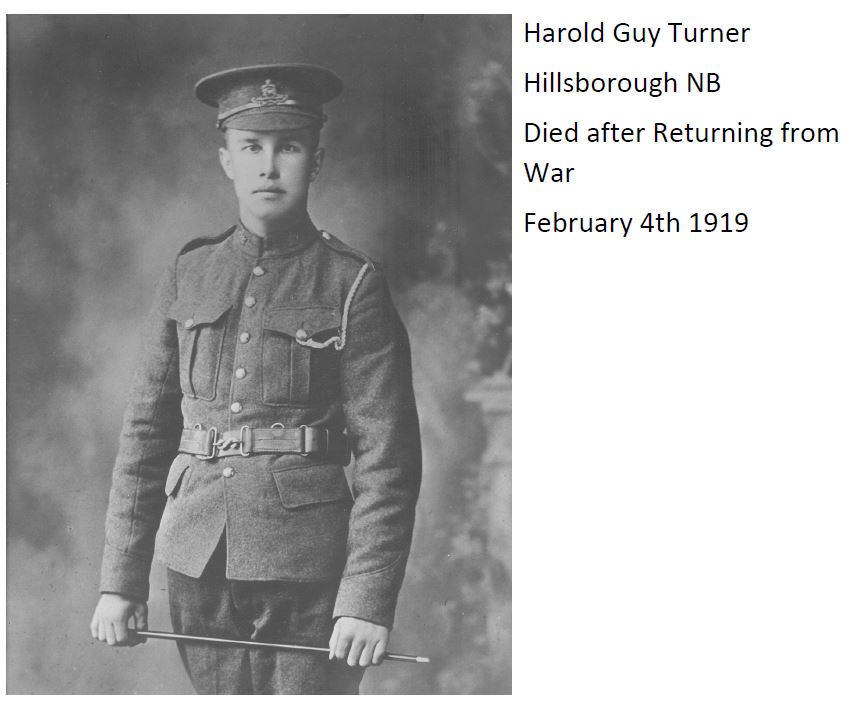

Celebrating Ruby Anderson's Scrapbook with Gwen Dixon
Join us at the Albert County Museum in congratulating Gwen Dixon on her outstanding achievement in completing this incredible project - Ruby Anderson's Scrapbook! Gwen is a long time friend of the Museum, volunteering in on the Fibre Arts & Quilt Show committee, where she also sells some of her work. This year, Gwen was also involved in instructing a rug hooking workshop during the event.
Gwen's fibre arts exhibit was inspired by a scrapbook that spoke of life on the Fundy Coast between the 1940s to 1960s, and it is this art that is being featured in exhibit during the Nova Scotia Fibre Arts Festival from October 8 to 15. Support this local talent by taking the drive out to view her exhibit. Details are below.
Introducing the Keynote Speaker at the 6th Annual RB Bennett Day - July 2nd, 2016
This Saturday, July 2nd, is our 6th Annual RB Bennett Day and this year we're celebrating the 75th Anniversary of Bennett becoming 1st Viscount Bennett, of Mickleham, in the County of Surrey and of Calgary and Hopewell, in the Dominion of Canada. We were extremely lucky to get Dr. Christopher McCreery, co-editor of "The Authentic Voice of Canada, R.B. Bennett Speeches in the House of Lords, 1941-1947", to come and talk on RB Bennett. His book on Bennett fits so well with the theme of this years event. So who is Dr. Christopher McCreery? Here is a brief biography.
Dr. Christopher McCreery (Photo from Wikipedia)
Dr. Christopher McCreery is the Private Secretary to the Lieutenant Governor of Nova Scotia and the Executive Director of Government House, a position he has held since April of 2009.
One of the Commonwealth’s foremost experts on orders, decorations and medals, Dr. McCreery has served as the advisor to the Federal Government and a number of Provincial and Commonwealth governments on matters related to honours. He has also regularly been consulted on the role of the Crown; reserve powers, protocol and the historical position of the monarchy in Canada.
He holds a doctorate in Canadian political history from Queen’s University, is a fellow of the Royal Canadian Geographic Society, the Royal Heraldry Society of Canada, the Queen’s Centre for the Study of Democracy, is National Historian for St. John Ambulance and is active with a number of other volunteer organizations.
Dr. McCreery’s publications include more than 50 articles and 14 books. In 2010 he was appointed a Member of the Royal Victorian Order by the Queen.
Opening Windows to Our Past - This Thursday 7:30pm - Come Explore the Diaries of the ACM
The Albert County Museum is excited to host our first of five "Opening Windows to Our Past" Diary Explorations, Thursday, May 26 at 7:30 pm. Taking place the last Thursday of every month, the "Opening Windows to Our Past" Series, is going to explore some of the many diaries in the museum's collection. It's going to be a walk through the past as told by the very people who lived it!
The first diary to be explored belonged to Emeline Stevens and was recently discovered in the museums collection at last year's Mystery Box Talks. Emeline was the third child of James Stevens and Eleanor Steeves who lived in the small farming community of Memel, NB.
The diary begins on August 20, 1882 and is a fascinating look at daily life in rural Albert County. It records many of the daily routines and activities a young lady working on a farm in the 1880's did. One of the highlights of the diary is the recording of one of the major events to happen in September 1882, so come and hear what she has to say!
The Opening Windows to Our Past Series is:
Thursday, May 26 @ 7:30pm
Thursday, June 30 @ 7:30pm
Thursday, July 28 @ 7:30pm
Thursday, August 25 @ 7:30pm
Thursday, September 29 @ 7:30pm
Special Events 2016 - Full Slate of Exciting Events Planned for Upcoming Season
The upcoming season at the Albert County Museum and RB Bennett Commemorative Centre is going to be an exciting one! With a full calendar of events planned, we couldn't be more excited! We think we have planned something for everyone! All our events are listed here, and you can click the gCal or iCal button and it will add it to your calendar automatically! Technology is amazing sometimes.
2016 SPECIAL EVENTS
Mother’s Day Supper May 8, 2016 (Sunday) at 6:00pm Treat your Mom to a delicious dinner. Advance Tickets $15 (no tickets at door)
Anglophone East School District Regional Heritage Fair May 11, 2016 (Wednesday) 2:00pm to 3:30pm Public viewing of student projects followed by Awards Ceremony at 3:30pm.
Museum Breakfast May 21 to October 8, 2016 (Every Saturday) 9:00am to 12:00 noon Each week features a diff erent breakfast sourced from the local economy.
Official Museum & Market Opening May 21, 2016 (Saturday) 11:00am Come out to celebrate the start of another season. Join us for the opening of a new exhibit “Steeves: 250 Years in Albert County”
Opening Windows to Our Past Last Thursday of Each Month (May to September) at 7:30pm Looking through Diaries from Albert County.
Farmers and Craft ers Market May 21 to October 8, 2016 (Every Saturday) 9:00am to 1:00pm Local foods and craft s ... grown, harvested and made right here in Albert County.
Father’s Day Supper June 19, 2016 (Sunday) at 6:00pm Treat your Dad to a delicious dinner. Advance tickets $15.00 (no tickets at door)
New Brunswick Battalions of Th e Great War June 11, 2016 (Saturday) 10:00am to 4:00pm Come share Memories and Memorabilia of the Great War. Admission by Donation to Victory Cannon Campaign.
Sixth Annual R.B. Bennett Day July 2, 2016 (Saturday) 9:00am to 4:00pm Come celebrate the birthday of Canada’s 11th Prime Minister. Free Birthday Cake! Museum Admission by Donation
40th Anniversary Quilt Show & Sale July 12 to 16, 2016 (Tuesday to Saturday) 9:30am to 5:30pm (Admission $3.00) Display & sale of hand craft ed quilts and goods. Watch for details about special history displays, demonstrations and workshops.
Steeves 250 July 22 to 29, 2016 (Friday to Friday) See our special exhibit “Steeves: 250 Years in Albert County” Visit www.steeves250.com for reunion details.
Black Forest Supper July 27, 2016 (Wednesday) at 6:00pm A Baden-Württemberg inspired evening. Advance Tickets $25 (no tickets at door)
NB Day Annual Lobster Supper August 1, 2016 (Monday) 5:00pm to 8:00pm Market Price (tickets available at door) Chicken option available.
Royalty Tea August 10, 2016 (Wednesday) at 2:00pm Celebrating the Queen’s 90th Birthday Advance Tickets $15 (no tickets at door)
Antique Road Show September 18, 2016 (Sunday) 2:00pm to 4:00pm Have your antiques appraised ($5.00 per item or 3 for $10.00)
“Christmas Memories” Concert November 20, 2016 (Sunday) at 2:00pm Festive music, singing, dancing, drama & refreshments. Advance tickets $12.50
Albert County Historical Society Annual General Meeting October 20, 2016 (Thursday) at 7:30pm 2017 Memberships will be available.
Yes, It was an April Fool's Joke - But the Question Still Remains Was Tom Collins Guilty or Not?
The story we posted earlier about Tom Collin's getting an official pardon, was an April Fools fabrication, it was done tongue-in-cheek, and if you took the time to read the article that would have been quite clear as the guilty party was named as Zeke Midas Wolf a.k.a. The Big Bad Wolf from Walt Disney. It was also posted with the the tags: The Big Bad Wolf and April Fools.
The purpose of such stories is to spread knowledge of the real event, if it gets people interested in learning the rest of the story, then mission accomplished. If you felt this was in bad taste, please understand we face an uphill battle getting our stories/history heard, and if you know the story then there are many who do not. This April Fools Story was meant for those people may not have previously heard it, and are now hopefully interested in learning more. It should be noted that the majority of the post was taken verbatim from the Tom Collins story posted on our website.
The Tom Collins story was (and still is) a divisive one in the community, especially as to his guilt or innocence. If you're interested in reading about the Tom Collin's story now please visit http://www.albertcountymuseum.com/the-tom-collins-story. The museum has a number of artefacts from this trial and we encourage you to visit the museum and learn more about the whole story.
The Museum is open May Long Weekend to Mid-September.
Albert County's 100 Year Old Axe Murder Mystery - The Tom Collin's Story
In what was called the Trial of the Century in New Brunswick, the grizzly axe murder has become the stuff of legends; from the discovery of the body, to the chase from Saint John to St. Stephen, and Collins' eventual capture. Every detail was published by the press and read by anxious readers all across the province. The press took an immediate liking to the prisoner. Many members of the general public began to speculate that the murder had not been committed by Collins, but by someone who killed Mary Ann during a robbery of the rectory. After all, the rectory had been robbed several months before Tom had arrived. There was even talk that some people in the community did not like Mary Ann. One story even suggested that Father McAuley had killed Mary Ann because she was pregnant with his child, although that was doubtful, since she was 52 years old at the time. The case attracted so much attention that the Premier of the Province, Lemuel Tweedie, acted as Crown prosecutor during the preliminary trial.
Tom Collins would be tried three times for the murder of Mary Ann McAuley. He is thought to be the first man in Canada ever to be tried for the same crime in three separate trials. All three trials would be held at the new court house in Hopewell Cape, constructed only two years earlier.
Tom would be detained, during the three trials, in the jail located next to the court house.
The first trial began in January 1907. It lasted nine days, a very long time for any trial by the standards of the day. Most trials took only one day for a decision to be reached and even other murder trials rarely lasted nine days. Father McAuley took the stand and identified the valises carried by Tom as being the ones stolen from him and that the contents of the valises matched the objects that were taken from the house. However, some of the stolen objects, including the missing jewelry, were not found in the valises. One key piece of evidence was a razor found in the stolen valise, it may have been the one used to cut Mary Ann's throat. Two razors had been stolen from Father McAuley, and he identified the one found in the stolen valise as his, the other was still missing. Although the defense argued that the razor found in the valise was not Father McAuley's but was instead the razor which had been loaned to Tom by Mr. William Williamson.
The axe thought to have been the one used to kill Mary Ann and also used to smash the closet doors in Father McAuley's bedroom, had been found the previous month behind the commode in Father McAuley's bedroom. During the three trials, many questions surrounding the discovery of the axe would arise. Why had Father McAuley not found the axe? It was the new house keeper who had discovered it. Why had the police not located it in their search? Why had the murderer hidden the axe but not disposed of Mary Ann's body?
During the first trial, the defense did not call any witnesses and Tom did not take the stand. None of Tom's relatives from England attended the trial, however several friends and family from England wrote letters testifying to Tom's good character. Both the defense and the prosecution gave long, well-written summations, lasting a total of five and a half hours. In the end, Tom was found guilty and sentenced to hang. However, his defense was able to successfully argue that the judge, in his charge to the jury, had committed errors, so a new trial was ordered. The second trial of Tom Collins lasted seven days. At this trial Tom did take the stand in his own defense. Tom's defense throughout all three trials was that he was a thief and a liar who had stolen from Father McAuley, but that he did not kill Mary Ann. His lawyers would argue that the evidence against him was all circumstantial and that someone else could have robbed and murdered Mary Ann. The second trial ended in a hung jury. The third trial also lasted seven days, the verdict returned was the same as in the first trial: death by hanging.
The community was split as to Tom's guilt or innocence. Many people contributed to his defense fund. Four hundred and eighty-eight people had signed a petition asking for lenience, but their pleas would go unanswered. The High Sheriff of Albert County, Mr. Lynds, refused to hang Tom, and threatened to quit if ordered to do so. The hangman arrived by train from Montreal and inspected the gallows. On the morning of November 15th, 1907, Tom Collins, after writing a letter thanking those who had helped him, was taken to the gallows and hanged by the neck until he was dead. His body was then buried in an unmarked grave outside of the jail, which had been his home for over a year. His body was re-interred at a nearby cemetery sixty years later, when the jail and court house became a museum.
Tom was the only prisoner ever to be hanged at the Albert County Gaol. His case was referenced in the Supreme Court to justify the Double Jeopardy amendment to the Canadian Criminal Code. For a more detailed view of the murder and trial you can read more here.
***This was the page for an April Fools Story from 2016, rather than delete it we have removed the fictitious elements and left what we know to be the truth. Please follow the link above to read more or better yet come to the Museum and examine the evidence yourself. We have many articles from the original trial on display. ***
*** The comments below reflect the original article.***
The Forestdale Heritage Week Talks @ 2pm - An Update
From all accounts the drama at Forestdale Nursing Home yesterday was not to be missed. Kathleen and Paul Kyle, along with Kathleen's mom, Mary Steeves did a 20 minute drama (in costume) about William Henry Steeves. William Henry Steeves was a Father of Confederation and a strong candidate for our Top Ten Most Historical People of Albert County. There are rumours of a video of the event, which we're hoping to get a link to.
Today at 2pm, Dawne McLean is going to talk about the Reid Brothers with photos. The Reid Brothers were architects who designed many prominent buildings in Albert County and around the world.
Tomorrow, at 2pm Donald Alward, Manager and Curator at the Albert County Museum is talking about R.B. Bennett, Canada's 11th Prime Minister.
Then Friday, at 2pm Dawne McLean will be talking about Abner R. McClelan. McClelan was a Canadian senator and the tenth Lieutenant Governor of New Brunswick.
Don't forget to vote for Albert County's 10 most historical people here.
Who Do You Think Should Be the Ten People of Albert County That Everyone Should Know About?
It's New Brunswick’s Heritage Week 2016! The Heritage Week theme this year is ‘Leadership & Legacy’ and Albert County has produced its fair share of leaders.
Over the past few weeks we compiled an extensive list of potential candidates and after several debates we narrowed the list down to what is on the website and now we want you to make the final choice.
The 10 people that receive the most votes will be featured in a new exhibit at the Albert County Museum. Voting will close March 4, 2016.
Richard Bedford Bennett, 1st Viscount Bennett, PC KC (3 July 1870 – 26 June 1947) was a Canadian lawyer, businessman, politician, and philanthropist. He served as the 11th Prime Minister of Canada from 7 August 1930, to 23 October 1935, during the worst of the Great Depression years. Following his defeat as prime minister, Bennett moved to England, and was elevated to the peerage as Viscount Bennett.
Myrtle 'Molly' Kool (February 23, 1916 – February 25, 2009) was a Canadian-born American sea captain. She is recognized as being North America's first registered female sea captain or ship master.
William Henry Steeves (May 20, 1814 - December 9, 1873) was a merchant, lumberman, politician and Father of Canadian Confederation.
Lt Col. Cyrus Peck - VC, DSO & Bar (26 April 1871 – 27 September 1956) was a Canadian recipient of the Victoria Cross, the highest award for gallantry in the face of the enemy that can be awarded to British and Commonwealth forces. Peck was one of the seven Canadians to be awarded the Victoria Cross for their actions on one single day, 2 September 1918, for actions across the 30 km long Drocourt-Quéant Line near Arras, France. Peck was also the only VC winner to be a sitting member of Parliment.
John Smith - Founder of Albert County John Smith, 2nd, settled at Shepody, Albert County. He was a member of the New Brunswick Legislature, and Justice of the Peace.
Reid Bros (3) Architects- Were Canadian architects, who founded the California architectural firm, Reid & Reid. Born in Harvey, New Brunswick to William J. Reid and Lucinda Robinson. They were James W. Reid (1851-1943), Merritt J. Reid (1855-1932), and Watson Elkinah Reid (1858-1944) Notable buildings are the Hotel del Coronado, the Riverside-Albert Consolidated School, the Albert County Court House and Victoria Manor (home of Lt. Gov AR McClelan).
Pierre Thibodeau - Born in 1631 in Poitre, France, Pierre Thibodeau lived on a farm as a child. He moved to Acadia as a young man when he was offered a piece of land in a Seigneury. In 1698, at the age of 67, he left Port Royal to found a new settlement at Shepody.
Gaius Samuel Turner (August 12, 1838 – April 25, 1892[1]) was a businessman and political figure in New Brunswick, Canada. He represented Albert County in the Legislative Assembly of New Brunswick from 1879 to 1892 as a Liberal-Conservative. He was born and educated in Albert County, New Brunswick, the son of Isaac Turner and Elizabeth Colpitts. In 1876, he married Lucy E. Stiles. He was a justice of the peace. Turner was a ship builder in Harvey, New Brunswick, and also was a director for the Albert Railway. He was named to the province's Executive Council in 1883 but resigned later that year. He died in office at Fredericton at the age of 53 after a long illness.
Judson Arthur Cleveland was possibly the most outstanding citizen of Alma for his role in holding the community in place as his saw mill ran despite tiresome bad economic times, providing livelihoods so that families might remain. He was a long-standing champion of Community on the County Council as a warden and councilor. Judson Arthur Cleveland, son of David Cleveland and Mary (Martin), was born 25 Nov. 1867. He married Ella Jane Keirstead Sept. 19, 1900. Judson died 6 Nov. 1951.
Mary Majka - Born in Poland in 1925 (d.2014) to a Czechoslovakian countess and a Polish school principal, It was in New Brunswick that she would finally feel at home and it was there that Mary would begin her life’s work, saving wildlife environments, preserving historic sites, and educating Canadians about the natural world.
Abner Reid McClelan (January 4, 1831 – January 30, 1917) was a Canadian senator and the tenth Lieutenant Governor of New Brunswick.Born in Riverside-Albert, New Brunswick, the son of Peter McClelan and Lucy (Robinson) McLelan, he was educated at Mount Allison Wesleyan Academy in Sackville, (now Mount Allison University). He was elected to the Legislative Assembly of New Brunswick in 1854 and served until confederation in 1867 when he was called to theSenate of Canada for the senatorial division of New Brunswick. A Liberal, he resigned in 1896 when he was appointed Lieutenant Governor of New Brunswick. He served until 1902. McClelan died in Moncton, New Brunswick in 1917.
William Andrew Cecil Bennett PC OC (September 6, 1900 – February 23, 1979) was the 25th Premier of the Canadian province of British Columbia. With just over 20 years in office, Bennett was and remains the longest-serving premier in British Columbia history. He was usually referred to as W.A.C. Bennett, although some referred to him either affectionately or mockingly as "Wacky" Bennett.
William James Lewis (September 23, 1830 – June 22, 1910) was a physician and political figure in New Brunswick, Canada. He represented Albert County in the Legislative Assembly of New Brunswick from 1879 to 1896 and Albert in the Canadian House of Commons from 1896 to 1904 as an Independent and then Liberal member.
Charles Joseph Osman (April 15, 1851 – 1922) was a businessman and political figure in New Brunswick, Canada. He represented Albert County in the Legislative Assembly of New Brunswick from 1897 to 1908 as aLiberal member. He was born in England, was educated in Hertfordshire and later emigrated to New Brunswick. Osman married Laura E. Tomkins. He was the manager of a plaster mill and quarries at Hillsborough. He was first elected in an 1897 by-election held after William James Lewis was elected to the Canadian House of Commons. Osman served as speaker from 1907 to 1908.
Sir George Robert Parkin - Organizing Secretary for Rhodes Scholarship. Born at Parkindale near Salisbury, New Brunswick, he was a graduate from the University of New Brunswick. From 1867 to 1871, he taught at the Bathurst Grammar School. From 1872 to 1889, he was the headmaster of the Fredericton Collegiate School, where the poets Charles G.D. Roberts, Bliss Carman, and Francis Shermancame under his influence. He attended the University of Oxford in 1873–1874. From 1895 to 1902, he was the headmaster of Upper Canada College. He was the organizing secretary of the Rhodes Trust (1902–1922) and the Toronto Round Table Group (1910–1922). Lord Milner was an ardent admirer of Parkin's imperial ideas. He was the author of Imperial Federation: The Problem of National Unity (1892) and a school textbook, Round the Empire. He was appointed Companion of the Order of St Michael and St George in 1898 and Knight Commander of the Order of St Michael and St George (KCMG) in the 1920 New Year Honours for his work with the Rhodes Trust. His daughter Alice married Canadian businessman and diplomat Vincent Massey, who would become governor general of Canada shortly after Alice's death in 1950.He was the maternal grandfather of the philosopher George Grant.
Harold A. Terris Spitfire pilot ww2/MLA was a military pilot, civil servant, and politician in the Province of New Brunswick, Canada. During World War II, Harold Terris served overseas as a Spitfire pilot with the Royal Canadian Air Force. After the War, he worked as a civil servant for the province of New Brunswick. In 1987 he was the successfulLiberal Party candidate for the riding of Albert, defeating incumbent Malcolm MacLeod. Terris chose not to seek reelection in 1991.
Malcolm Noble "Mac" MacLeod (born 8 February 1928) was a Canadian politician. Born in Moncton, he served as a longtime member of the Legislative Assembly of New Brunswick representing the electoral district of Albert from 1970 to his defeat in 1987 when his Progressive Conservatives lost every seat in the legislature. He was the second longest serving Minister of Agriculture in New Brunswick, serving as Minister of Agriculture and Rural Development from 1974 to 1985. He served as Minister of Natural Resources and Energyfrom 1985 until the defeat of his government in 1987. Following the election he served as interim leader of the PC Party until the election of Barbara Baird in 1989.
Judge Albert Watson Bennett was born in Hopewell Cape in 1864.He attended school there and went on to study law in Dorchester. He was admitted to the bar of New Brunswick in 1885 and practiced in the town of Sackville. Several years later he was appointed to the County Court of Westmorland and Kent. Throughout his career he saw many different life situations and witnessed the inequality of health services. When he retired in 1945 he began to seriously consider the state of healthcare in this region. He decided to make a difference by contributing towards creating equally accessible medical treatment for every one. He did this through making a large bequest to the Albert County Hospital. Upon his death in 1963, his estate went to his wife and it was not until she passed away in 1973 that the contribution was bequeathed to the hospital in the amount of $232,000. The following year the fund had accumulated to $359,286.63 with interest. Many improvements, equipment purchases, scholarships and educational opportunities have been made in the spirit of Judge Albert Bennett's vision of improved and quality healthcare for the residents of Albert County through the Bennett and Albert County Health Care Foundation Inc. (formerly the Bennett and Albert County Hospital Foundation).
Alexander Rogers (February 12, 1842 – July 2, 1933) was a merchant and political figure in New Brunswick, Canada. He represented Albert County in the Legislative Assembly of New Brunswick from 1875 to 1878 and Albert in the Canadian House of Commons from 1878 to 1882 as a Liberal member. He was born in Hopewell Hill, New Brunswick, the son of William Rogers and Eliza Loughead, and was educated at Mount Allison College. In 1866, Rogers married Bessie Moore. His election to the provincial assembly was appealed twice but Rogers won the by-elections which followed each time. He died at Hopewell Hill at the age of 91.
John Wallace (November 18, 1812 – January 1, 1896) was a New Brunswick farmer and political figure. He represented Albert in the Canadian House of Commons as a Liberal member from 1867 to 1878 and then from 1883 to 1887 as a Liberal and then as a Liberal-Conservative. He was born in Hillsborough, New Brunswick in 1812, the son of James Wallace and Catherine Copp, and grew up there. His grandparents had come to New Brunswick from Donegal in northern Ireland. Wallace was president of the Albert Agricultural Society and also a justice of the peace. Besides operating a large farm, he also owned a sawmill and was a director of the Albert Southern Railway. Wallace was originally a Liberal. After his election in 1882 was appealed, he was elected again in an 1883 by-election after running as a Liberal-Conservative.He was married three times: to Eleanor Russell in 1846, to Cynthia Foss in 1859 and to Charlotte Stackford in 1872.
Harry Orliff Downey (May 9, 1897 – April 17, 1974) was a fox rancher and political figure in the Province of New Brunswick, Canada. He represented Albert in the Legislative Assembly of New Brunswick from 1931 to 1952 as a Liberal member. He was born in Curryville, New Brunswick, the son of Oscar E. Downey and Rose E. Matthews. Downey was speaker for the provincial assembly from 1944 to 1952.
Claude D. Taylor (September 13, 1911 – 1970) was a real estate agent and political figure in New Brunswick. He represented Albert in the Legislative Assembly of New Brunswick from 1952 until his death in 1970 as a Progressive Conservative member. He was born in Edgetts Landing, Albert County, New Brunswick, the son of Douglas Taylor and Bernice Steeves, and was educated at the provincial normal school in Fredericton and at Mount Allison University. In 1938, he married Winnifred Way. Taylor served in the province's Executive Council as Minister of Education and Municipal Affairs from 1952 to 1954 and Minister of Education from 1954 to 1960. Taylor was also a public school teacher for 13 years. Claude D. Taylor School (an elementary school in Riverview, New Brunswick) is named in his honour.
Heinrich Stief (son of Augustin Stief and Anna Barbara Worner) was born 12 Dec., 1718 in Sirchingen, Wurttemberg, and died between 1778 and 1780 in Hillsborough, Albert Co., New Brunswick. He married Regina Stahleker Feb 25, 1745 in Münsingen, Wurttemberg. The couple are the progenitors of upwards of 250,000 descendants around the world.
Fred Colpitts (1887-1963) a keenly community minded citizen, spearheaded the breeding of Black, Silver and Platinum foxes in North America. Born in 1887 at Little River, Fred Colpitts spent only a few years at the small country school, then moved to Salsibury. In 1913 he bought three Black foxes and from this small beginning he developed the largest ranch in the British Empire.Through selection and inbreeding, Fred developed the Platinum fox. This breed gained world recognition and attracted visitors from many countries. His Platinum foxes received top sales figures in Montreal, New York and London. One matched pair sold for $5,000.00, winning the highest awards at many major shows across Canada. In 1927 he bought an Alberta dairy farm and moved the registered Holstein herd East. The herd still continues today as the "Little River Holsteins". He was also a founding member of the New Brunswick Branch Holstein-Friesian Association.Colpitts was also a well known lumberman, and during World War II he employed hundreds of men in cutting pitprops for the British Ministry of Supply. Colpitts represented his county as a member of the Legislative Assembly of New Brunswick from 1930 to 1939. Colpitts was also instrumental in having Fundy National Park located in Albert County.


